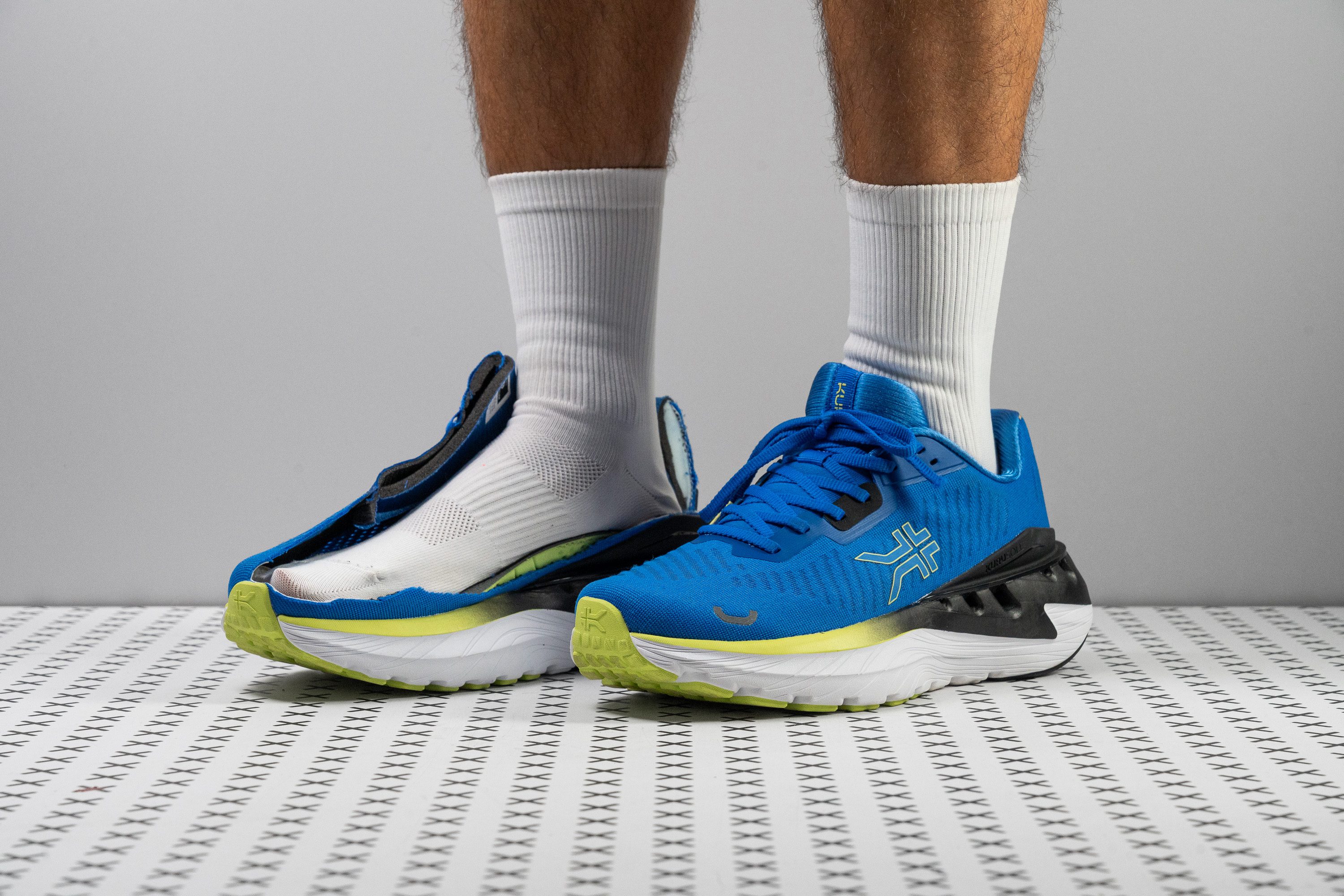Nuestra conclusión
Pros
- Ideales para los talonadores extremos
- Talón muy estable
- Cómodas
- La suavidad de la mediasuela es equilibrada
- Buena durabilidad en general
- Suela maximalista en el talón
- Upper transpirable y de alta calidad
Contras
- Pesan un quintal
- Retorno de energía bajo
- Con menos amortiguación de lo que parece
- No son aptas para correr en serio
Veredicto de los usuarios
Comparativa
Las zapatillas de running más parecidas
+ + Añadir unas zapatillas | |||||
|---|---|---|---|---|---|
| Puntuación global | 87 Notables | 92 Excelentes | 86 Buenas | 91 Excelentes | |
| Precio | 210 € | 180 € | 190 € | 150 € | |
| Pace | Correr a diario | Correr a diario | Correr a diario | Correr a diario | |
| Absorción de impactos | Moderada | Alta | Moderada | Alta | |
| Retorno de energía | Bajo | Bajo | Bajo | Moderado | |
| Tracción | Moderada | Alta | Moderada | Moderada | |
| Arch support | Neutral | Neutral | Neutral | Neutral | |
| Peso laboratorio Peso marca | 15 oz / 424g 14.5 oz / 411g | 9.9 oz / 281g 10.2 oz / 289g | 12.9 oz / 366g 13.1 oz / 371g | 10.5 oz / 298g 11.5 oz / 325g | |
| Drop laboratorio Drop marca | 15.6 mm 6.0 mm | 12.7 mm 6.0 mm | 13.9 mm | 13.9 mm 10.0 mm | |
| Técnica de carrera | Talón | Talón | Talón | Talón | |
| Talla | - | Tallan un poquito pequeño | - | Tallan bien | |
| Rigidez de la mediasuela | Blanda | Blanda | Equilibrada | Blanda | |
| Diferencia de la rigidez de la mediasuela en frío | Pequeña | Pequeña | Pequeña | Pequeña | |
| Durabilidad de la parte delantera | Decente | Decente | Buena | Decente | |
| Durabilidad del acolchado del talón | Alta | Alta | Alta | Alta | |
| Durabilidad de la suela exterior | Buena | Buena | Decente | Decente | |
| Transpirabilidad | Media | Media | Baja | Media | |
| Anchura / ajuste | Media | Media | Media | Media | |
| Anchura de la parte delantera | Media | Media | Estrecha | Estrecha | |
| Flexibilidad | Moderada | Moderada | Moderada | Moderada | |
| Rigidez torsional | Rígidas | Rígidas | Rígidas | Rígidas | |
| Rigidez del contrafuerte del talón | Rígido | Rígido | Moderado | Moderado | |
| Rocker | ✓ | ✓ | ✓ | ✓ | |
| Talón laboratorio Talón marca | 42.4 mm | 44.1 mm 44.0 mm | 39.9 mm | 42.5 mm 45.0 mm | |
| Antepié laboratorio Antepié marca | 26.8 mm | 31.4 mm 38.0 mm | 26.0 mm | 28.6 mm 35.0 mm | |
| Anchuras disponibles | Estándar | EstándarAncho | EstándarAncho | EstándarAnchoExtra Ancho | |
| Orthotic friendly | ✓ | ✓ | ✓ | ✓ | |
| Estación | Todas las estaciones | Todas las estaciones | Todas las estaciones | Todas las estaciones | |
| Removable insole | ✓ | ✓ | ✓ | ✓ | |
| Clasificación | #163 Top 44% | #13 Top 4% | #181 Top 49% | #28 Top 8% | |
| Popularidad | #322 13% inferior | #108 Top 29% | #213 43% inferior | #10 Top 3% |
Who should buy
We think the KURU Triple Max Ion is a good match for:
- Casual runners who log one or two easy runs a week and put comfort first.
- Heel strikers who benefit from a super-high heel-to-toe drop and aren’t bothered by extra weight.
- Anyone seeking strong arch support for everyday wear with the option for some jogging.
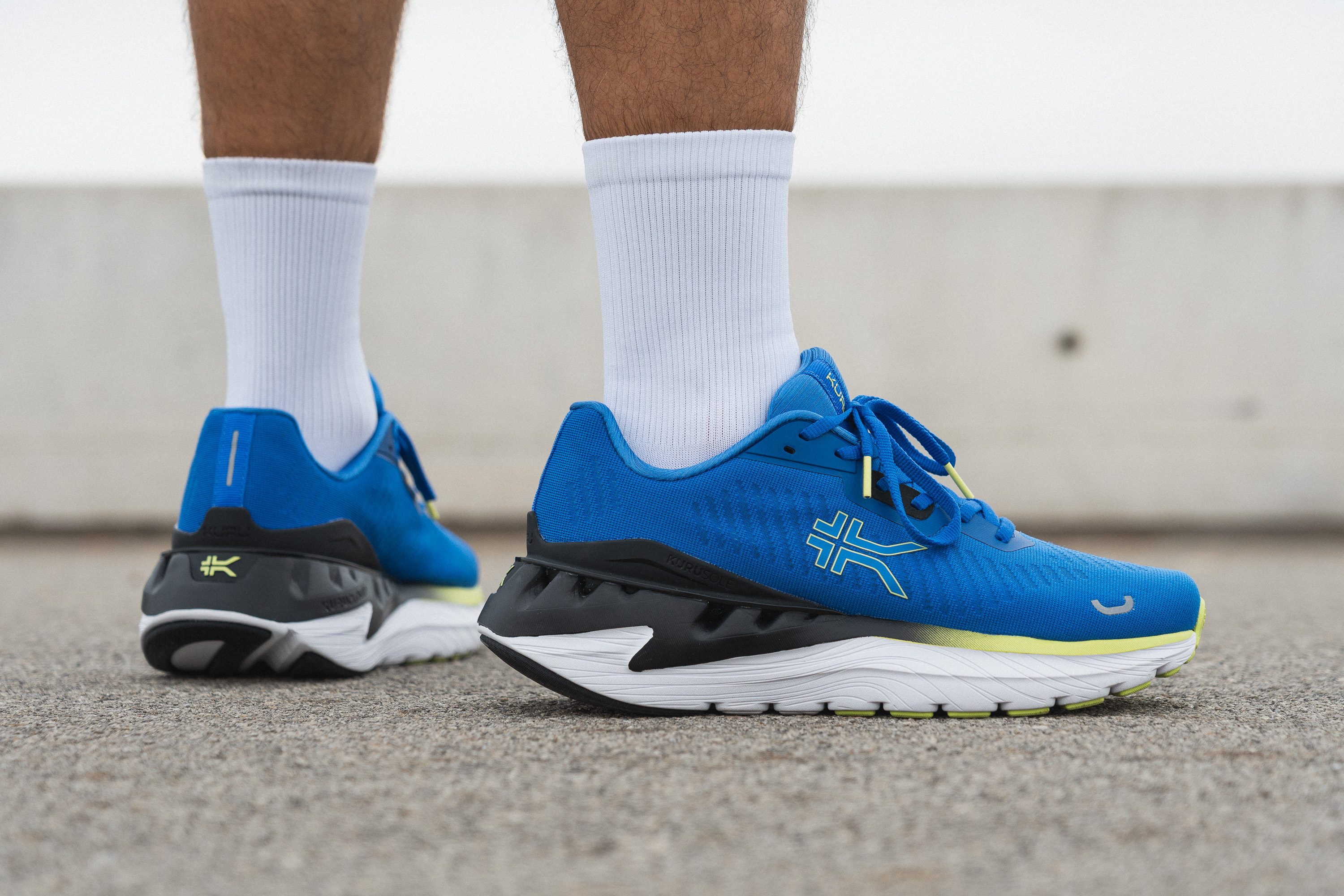
Who should NOT buy
We think the KURU Triple Max Ion is simply too heavy for serious running. In our lab tests, we found the massive weight limits its usability, making it a poor choice beyond short, easy efforts. Instead, we suggest the ASICS Novablast 5, or the Mizuno Wave Rider 28 for those who still want a higher drop.
Additionally, our analysis indicates that the low energy return makes it unsuitable for runners seeking performance. If you enjoy an energetic ride, the Adidas Adizero EVO SL or the Nike Vomero Plus are far better options.
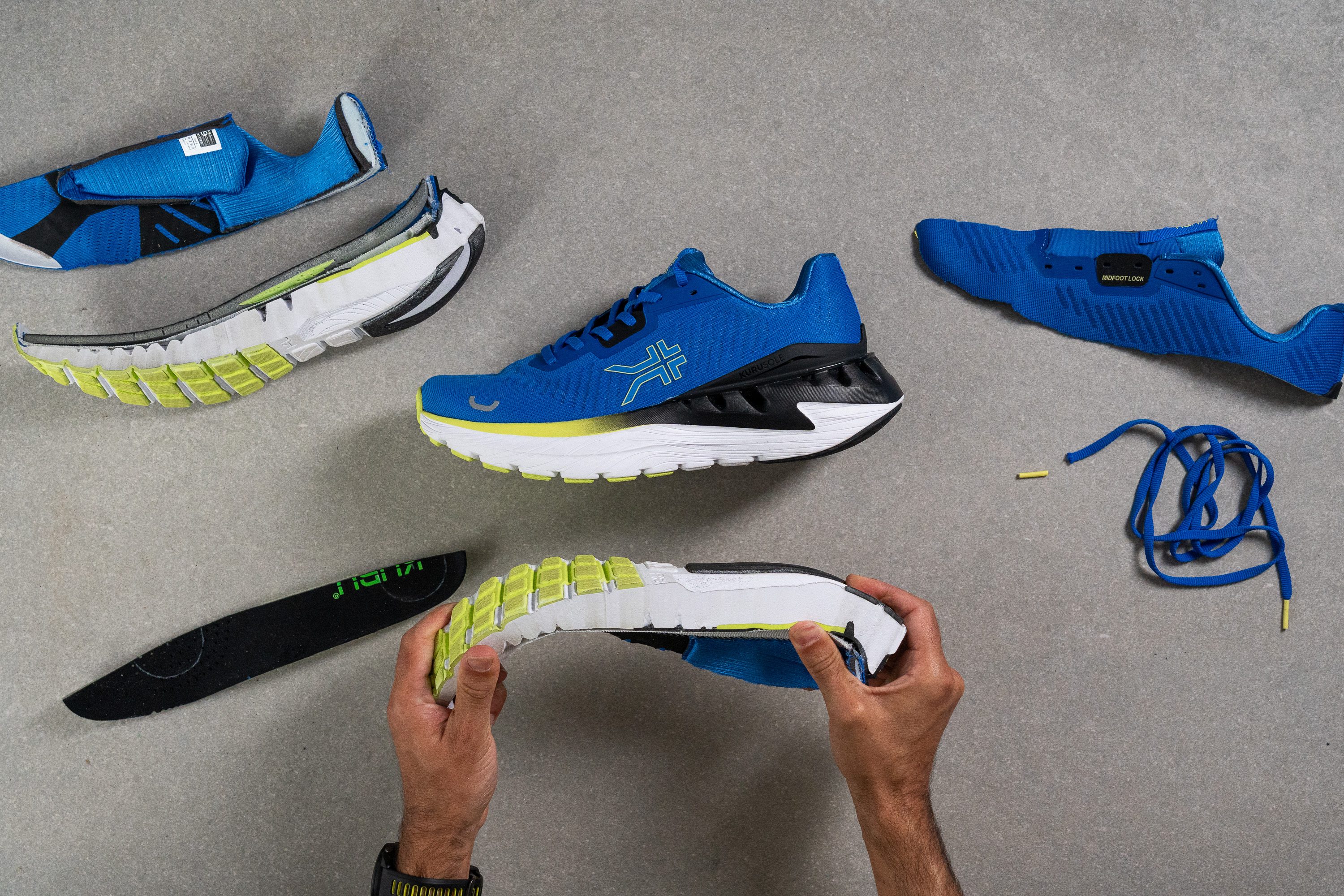
Amortiguación
Shock absorption
The KURU Triple Max Ion gives the impression of being highly cushioned, yet in our shock absorption test it only showed average results. We measured 122 SA in the heel and 105 SA in the forefoot.
Honestly, we expected stronger cushioning from this shoe, especially in the rearfoot.
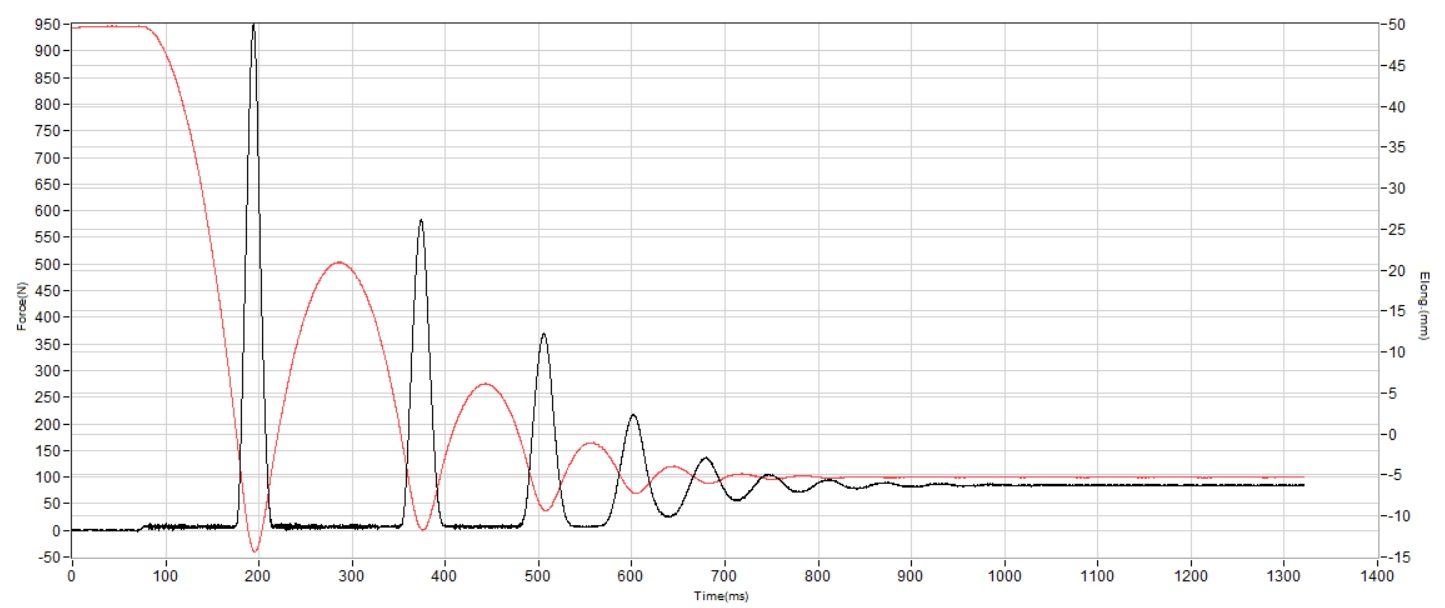
| Triple Max Ion | 122 SA |
| Media | 129 SA |
Energy return
For runners chasing performance, the Triple Max Ion falls short. We tested it and discovered just 44.0% energy return in the heel and 50.8% in the forefoot—numbers well below average and a mile away from performance-ready models.
And while most potential buyers of this shoe probably aren’t looking for a springy ride, we found these results disappointing given the high price of this shoe.
| Triple Max Ion | 44.0% |
| Media | 58.5% |
Altura de la suela en la zona del talón
The heel packs plenty of foam, measuring a towering 42.4 mm in stack height. This result places it firmly in the trendy maximalist category.
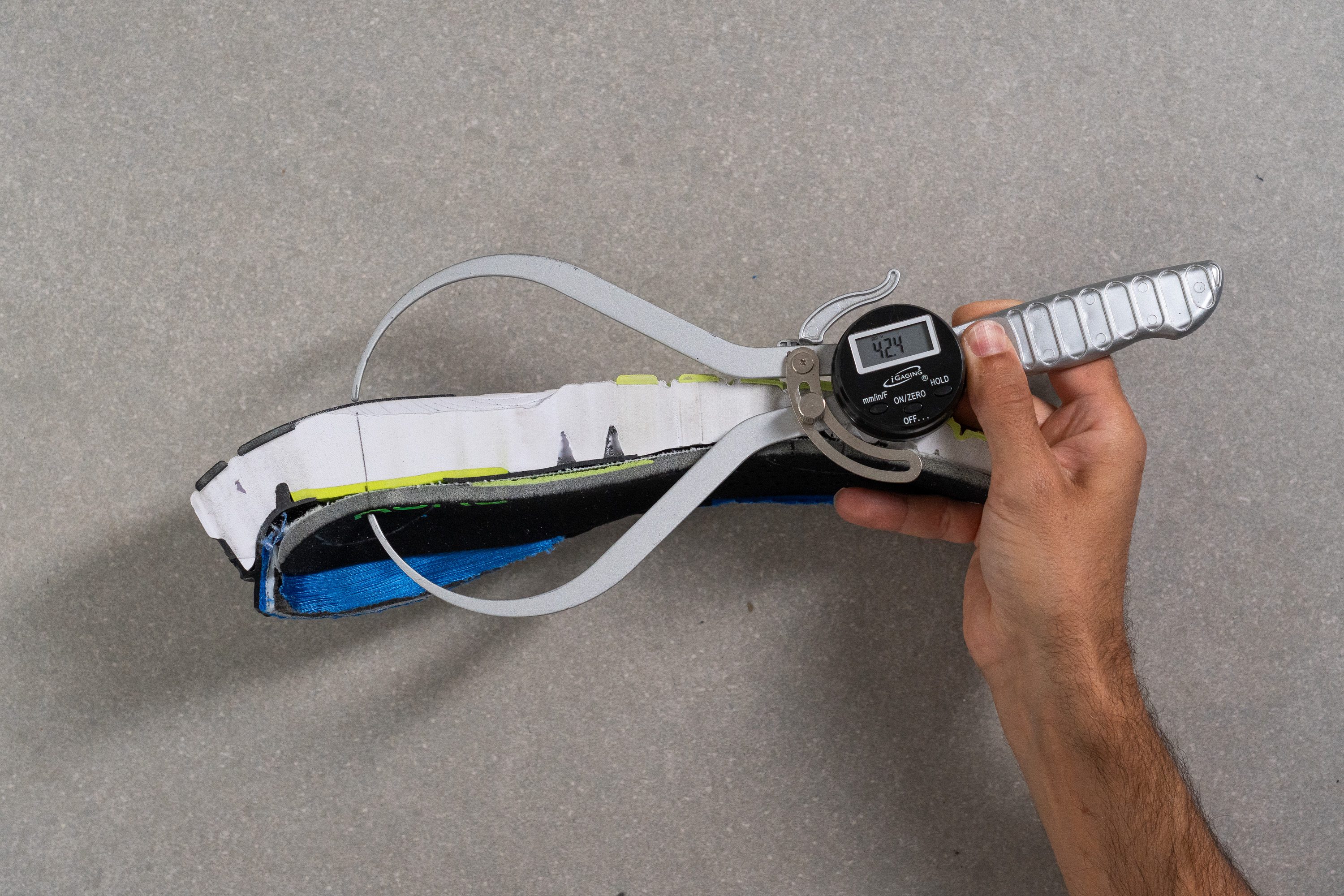
| Triple Max Ion | 42.4 mm |
| Media | 34.8 mm |
Altura de la suela en el antepié
We’re convinced KURU built this shoe with heel strikers in mind, as the forefoot shows a modest 26.8 mm stack height. It's definitely far less striking compared to the towering heel.
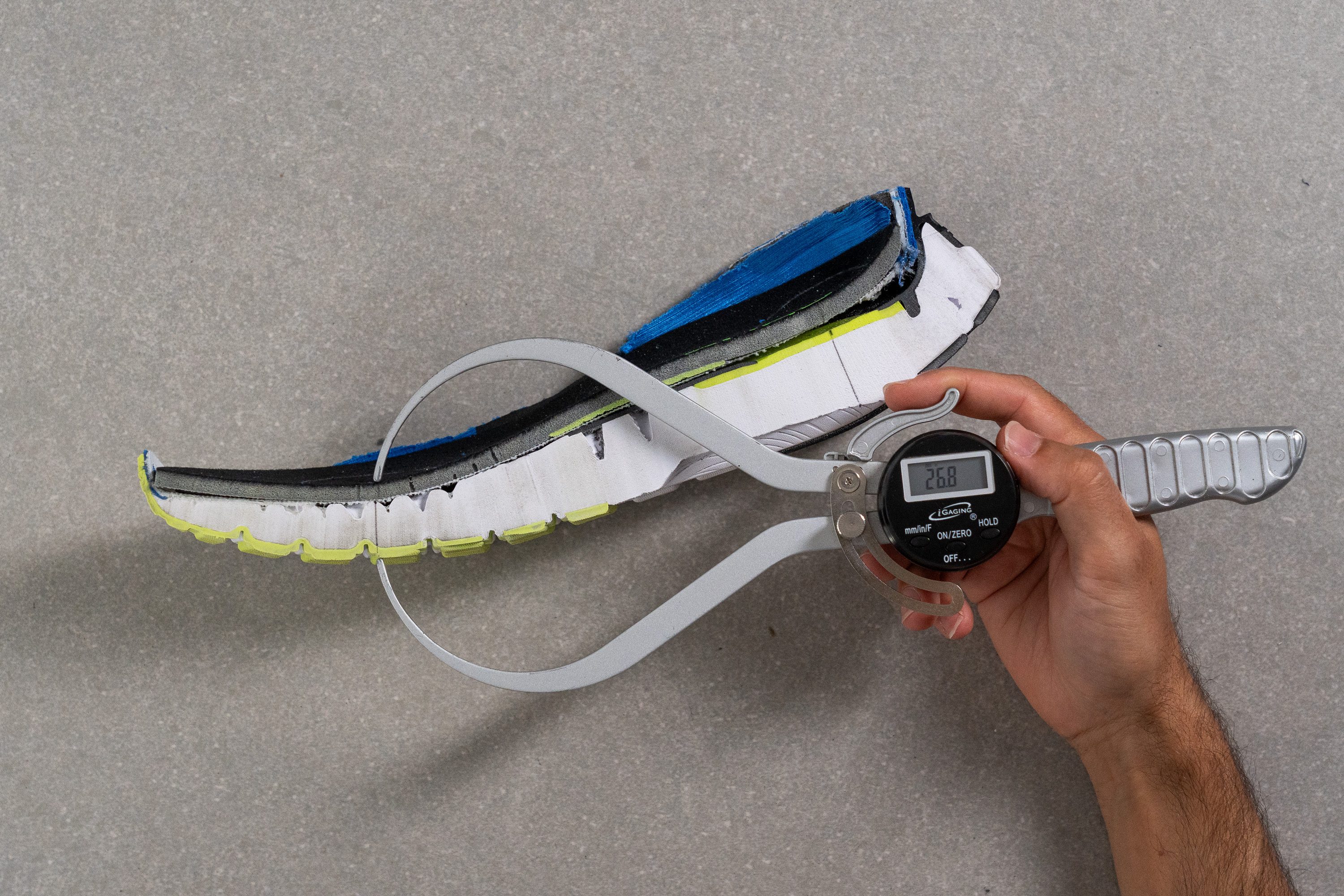
| Triple Max Ion | 26.8 mm |
| Media | 26.2 mm |
Drop
KURU claims a 12 mm heel-to-toe drop, while our calipers revealed a striking 15.6 mm.
This makes the Triple Max Ion a strong match for runners who require a super-high drop for health-related reasons or for extreme heel strikers who feel more natural in this setup. For many runners, however, we believe that it can feel excessive.
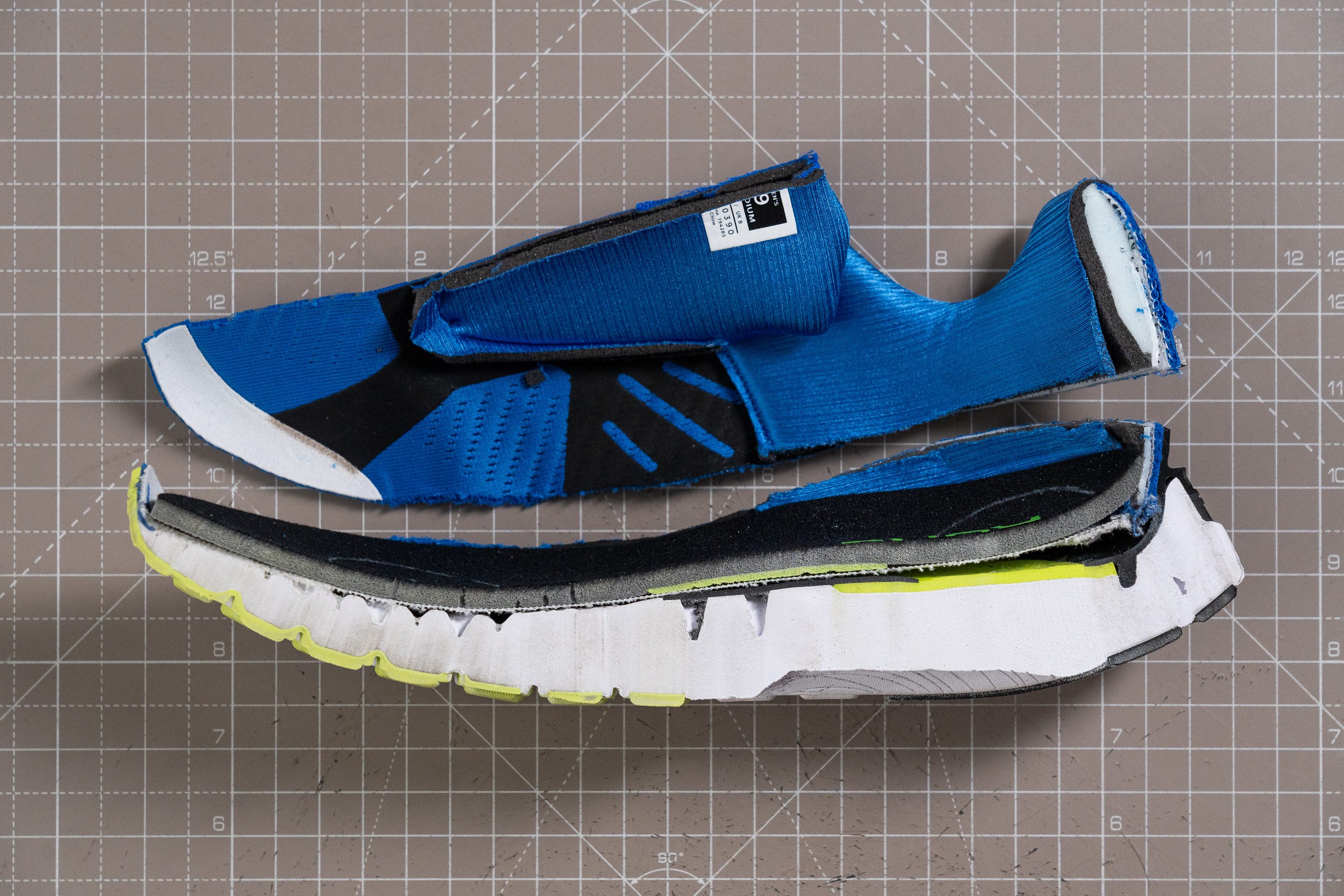
| Triple Max Ion | 15.6 mm |
| Media | 8.6 mm |
Suavidad de la mediasuela
The EVA-based midsole of the Triple Max Ion is called KURUCLOUD+, and we tested it to see how it really performs and if it does feel like a cloud. And we discovered a comfort-oriented design that feels closer to plush than firm. At 17.5 HA on our durometer, it measured well below the current lab average, confirming its softness.
Underfoot, the foam delivers an easygoing ride that we think works best for casual mileage and slower paces. Just remember that, as we proved before in our energy return test, is far from being an energetic foam.
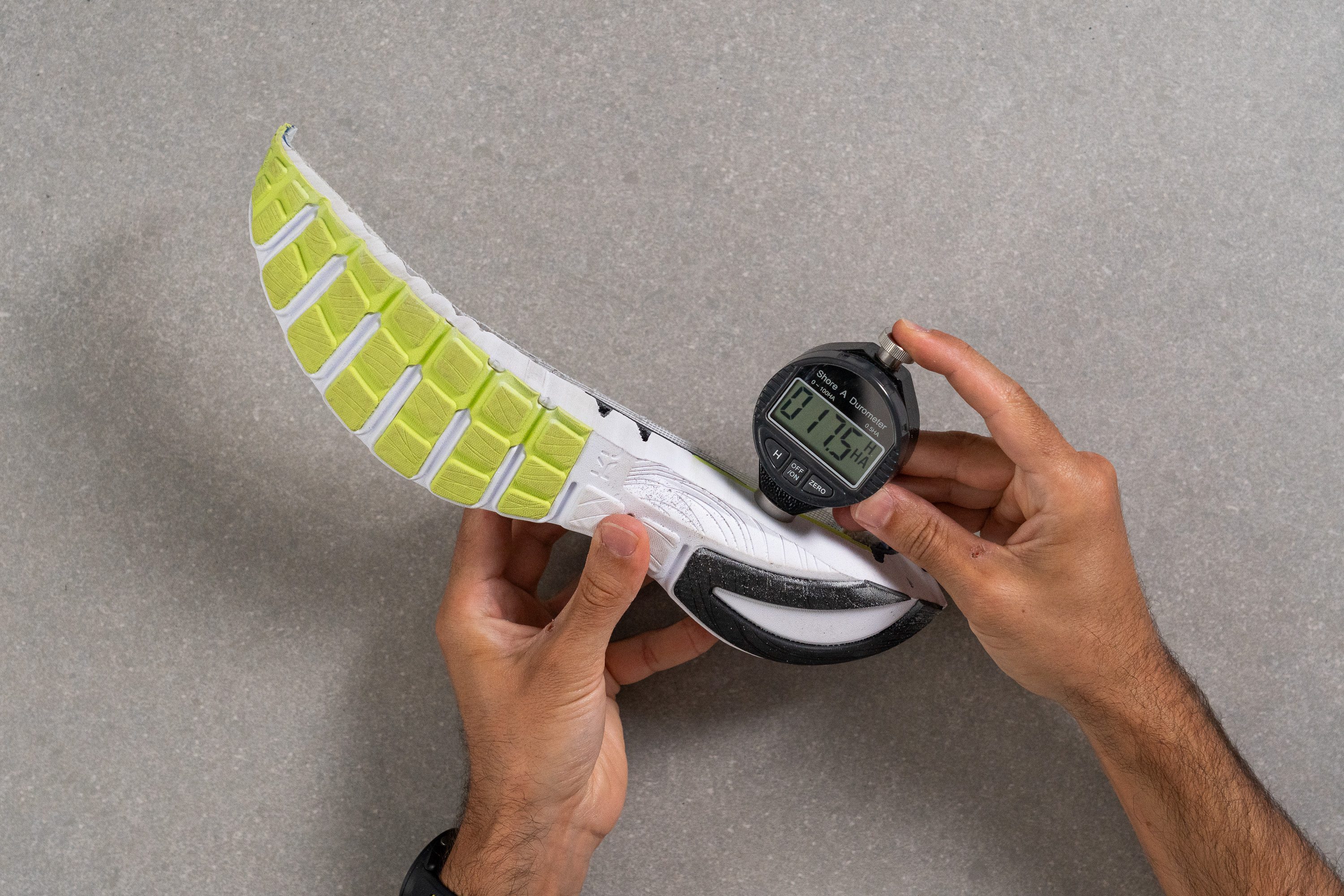
| Triple Max Ion | 17.5 HA |
| Media | 20.4 HA |
Rocker
In our view, the KURU Triple Max Ion’s rocker design makes it clear this shoe is tuned for heel strikers. The rearfoot curve creates a smooth entry into the stride, while the steep drop and forefoot rocker combine to deliver easy, assisted transitions.
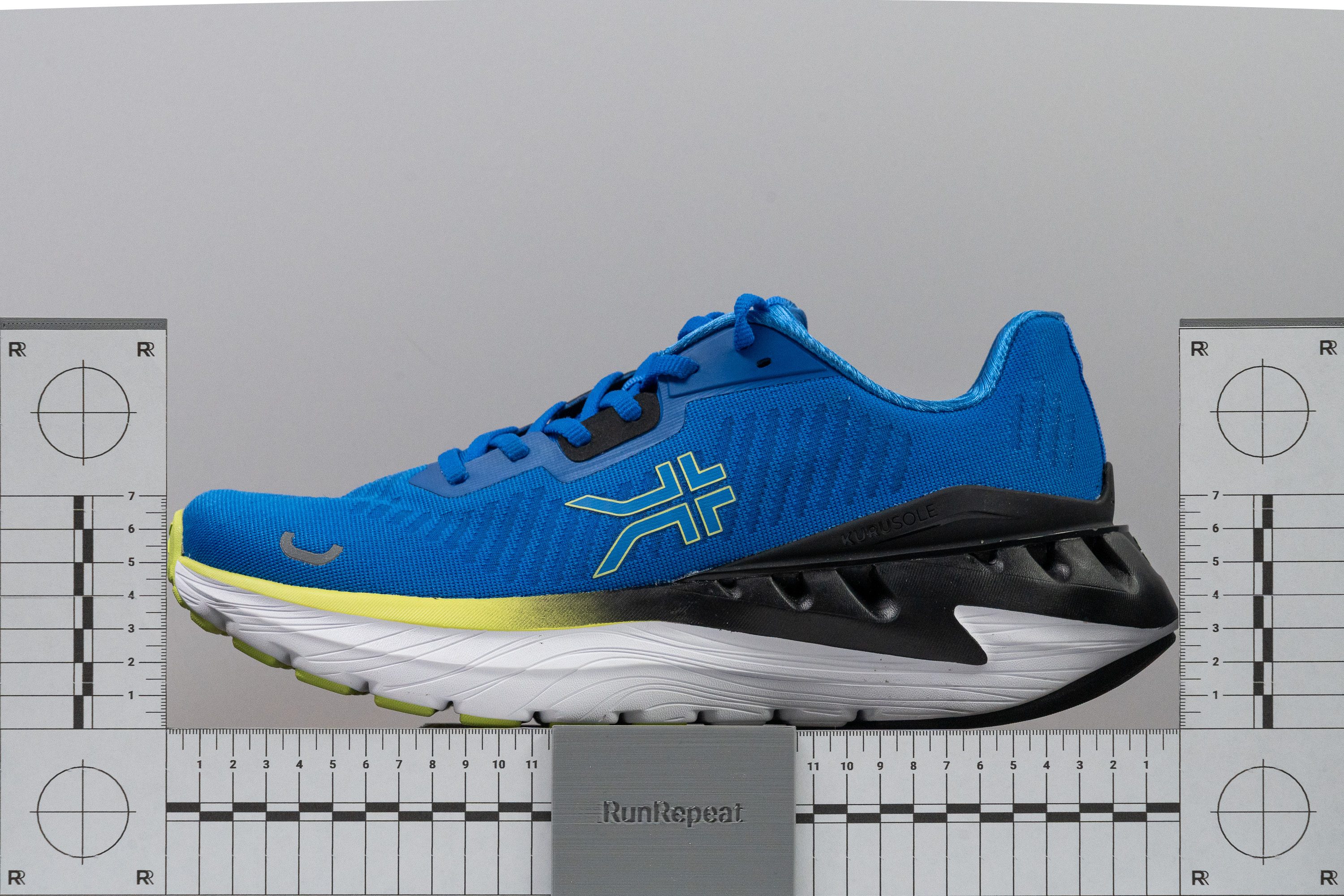
Tallaje y ajuste
Talla
Anchura / Ajuste
When we tried the Triple Max Ion for the first time, we didn’t notice any hot spots or serious discomfort.
To check more carefully, we used our gel mold process and found a measurement of 94.8 mm, which is very close to the lab average.
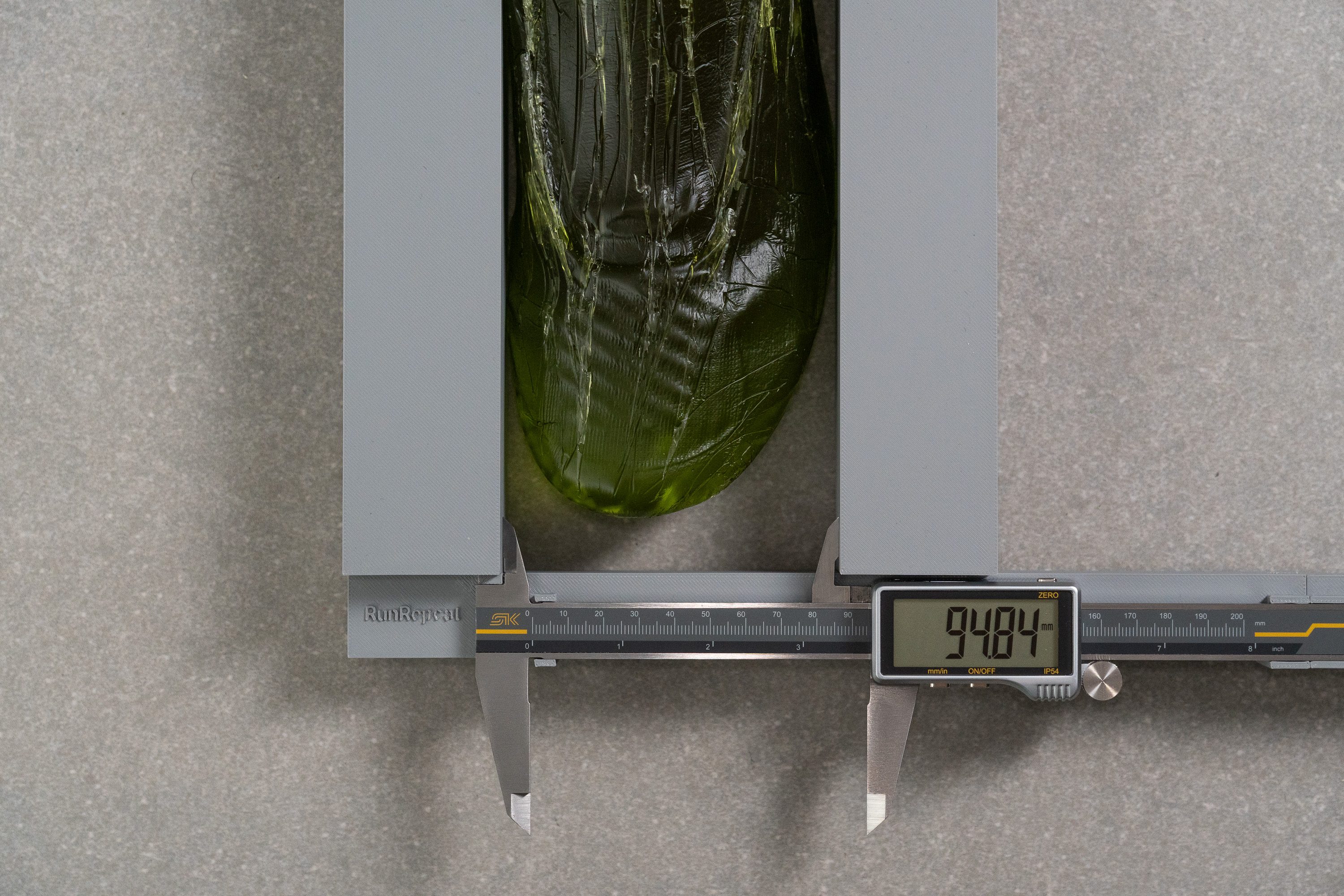
| Triple Max Ion | 94.8 mm |
| Media | 95.1 mm |
Anchura de la parte delantera
The toebox width measured 73.1 mm, placing it very close to the average and confirming that KURU aimed for a safe-approach design meant to accommodate most runners without causing fit issues.
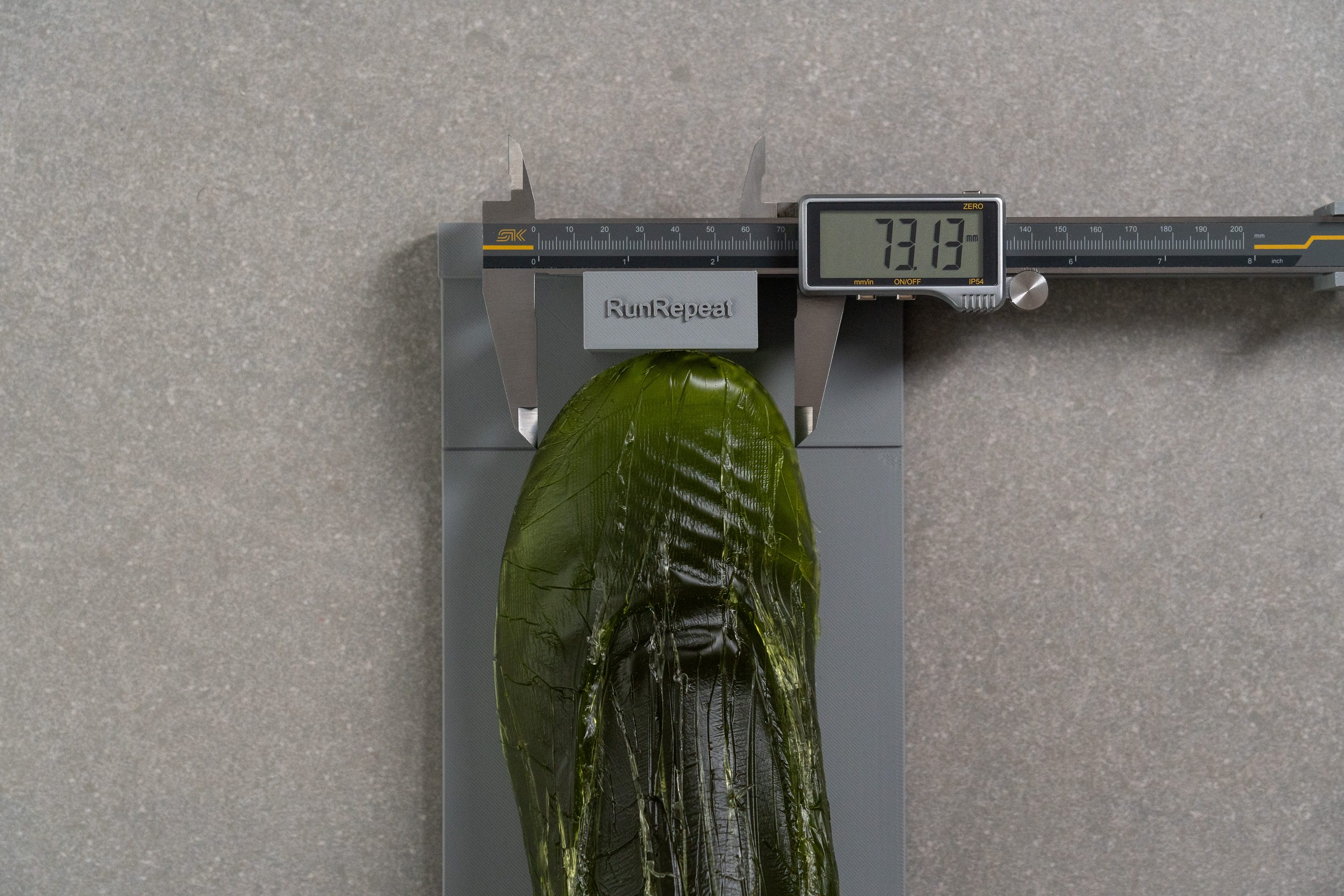
| Triple Max Ion | 73.1 mm |
| Media | 73.2 mm |
Altura de la parte delantera
When we tested the Triple Max Ion, we discovered the toebox height (24.8 mm) was lower than expected compared to our first two measurements.
This creates a close-to-toe upper that delivers a snug, super-supportive fit but may bother runners sensitive to extra pressure.
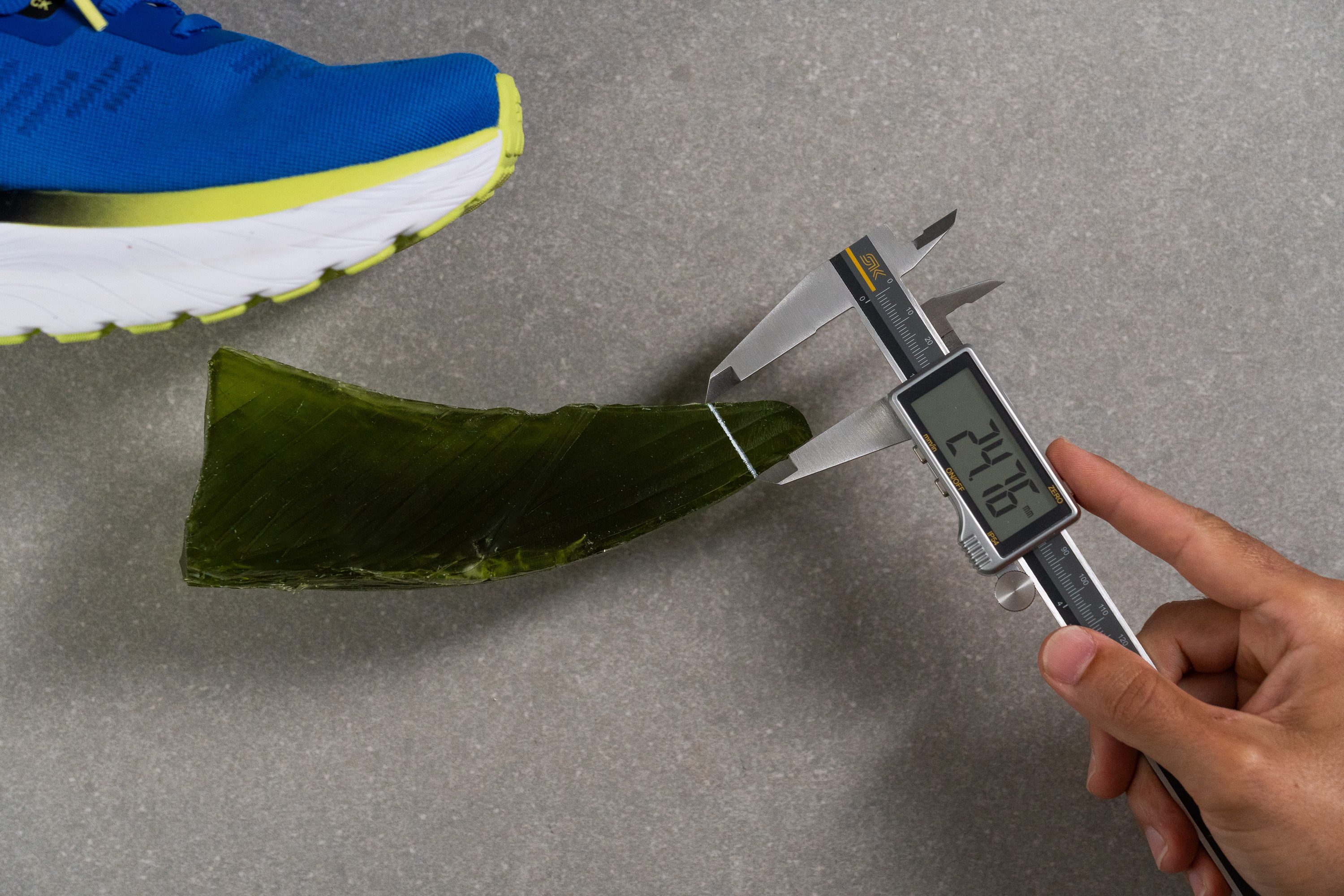
| Triple Max Ion | 24.8 mm |
| Media | 27.1 mm |
Tracción / Agarre
Traction test
During our tests, we discovered the Triple Max Ion offered dependable traction on both wet and dry roads. While its grip score (0.40) falls slightly behind other shoes in the same price tier, the performance is still good enough and we can't complain.
| Triple Max Ion | 0.40 |
| Media | 0.48 |
Diseño de la suela exterior
In the heel of the Triple Max Ion, the rubber coverage is notably reduced, with only two black pods placed on the outer edges, leaving large areas of exposed midsole foam. This design contrasts with the forefoot, which features denser, continuous rubber coverage shaped into rectangular lugs with subtle texturing.
It’s a bit surprising, given that this shoe is heavily marketed—and clearly designed—for heel strikers, and we expected to see greater protection and more substantial rubber coverage in that area.
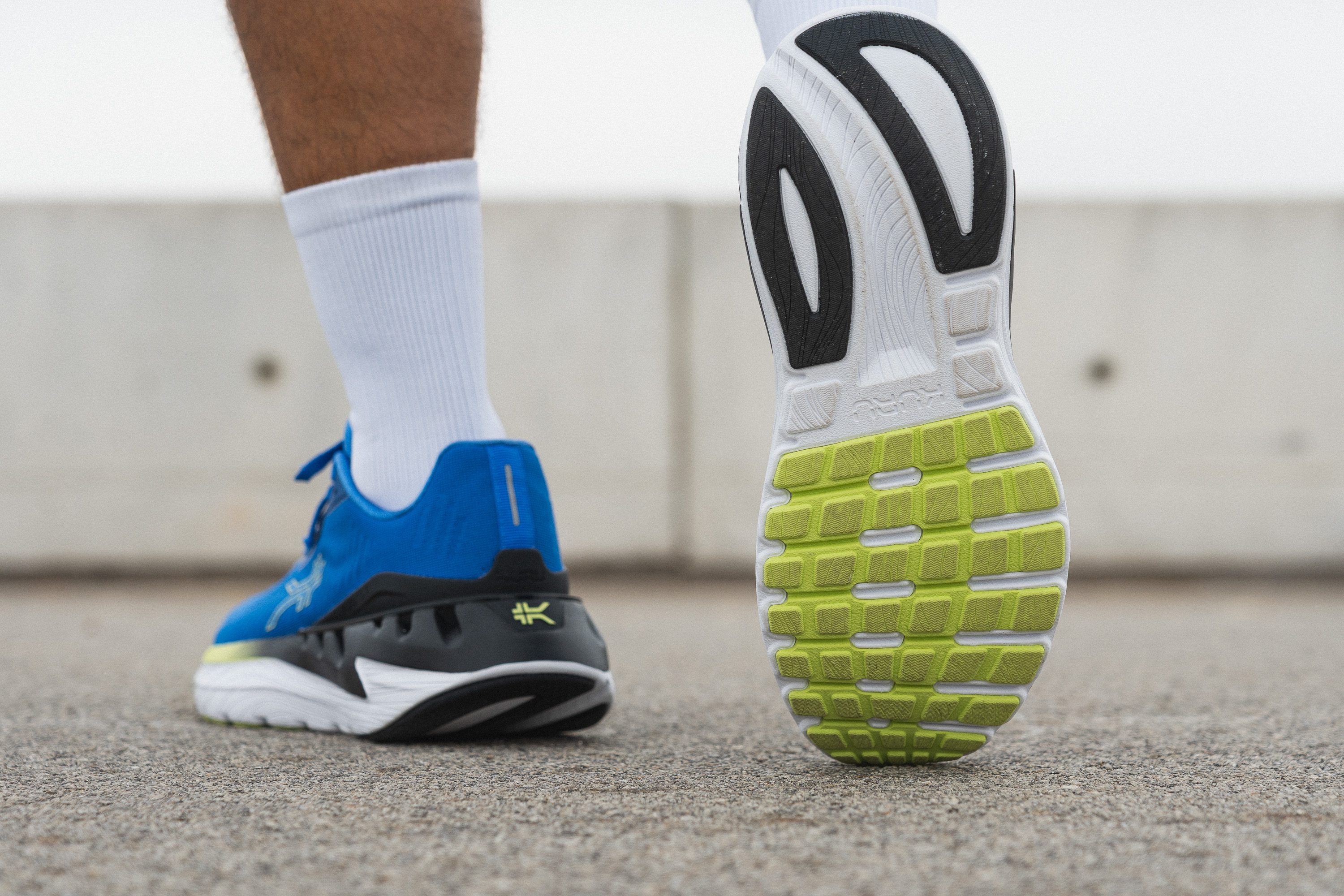
Flexibilidad / Rigidez
The KURU Triple Max Ion takes advantage of its forefoot grooves and the moderate stack height in that zone, resulting in a measured flexibility of 15.4N in our 30-degree bend test.
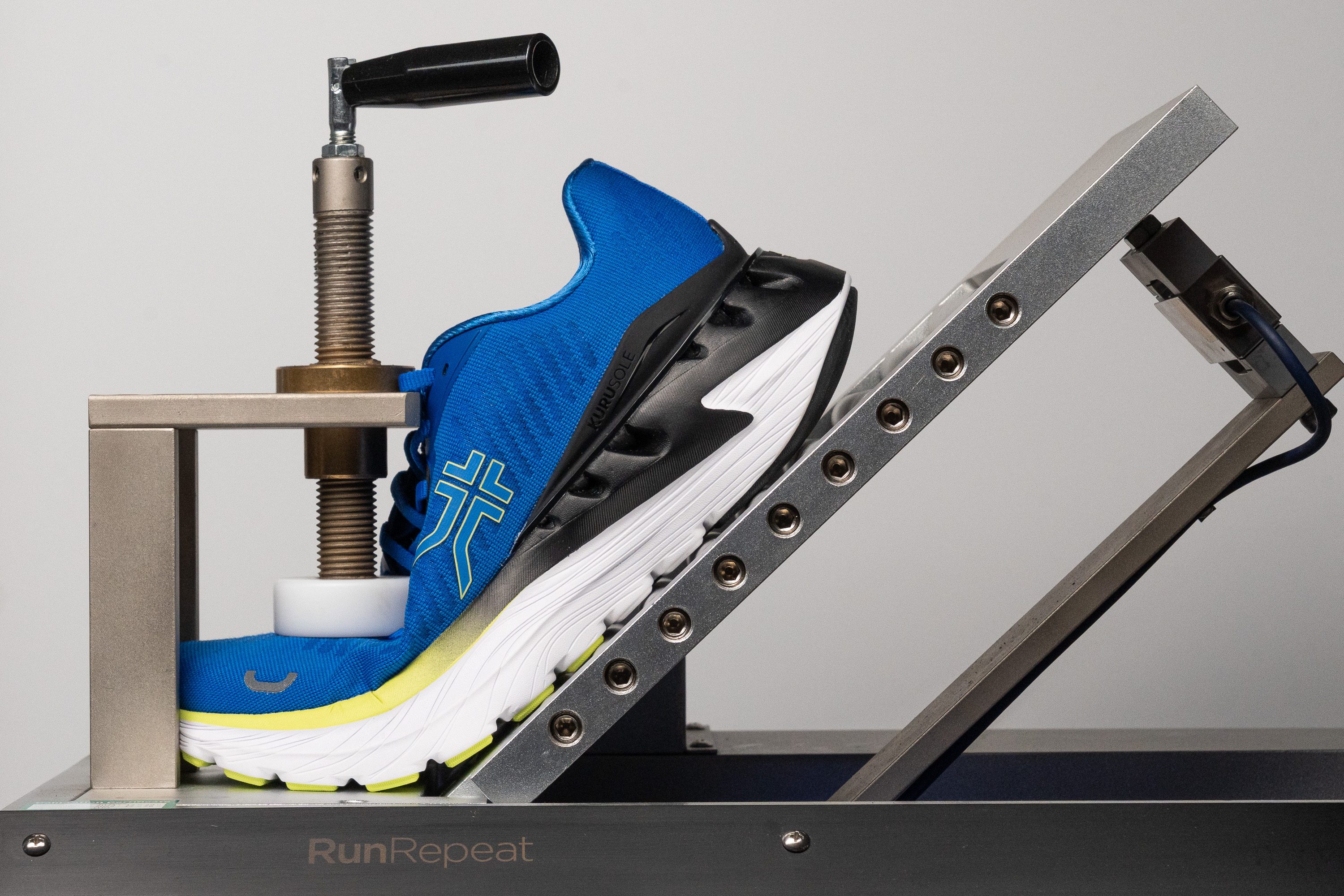
| Triple Max Ion | 15.4N |
| Media | 15.3N |
Peso
And here comes our biggest concern with the KURU Triple Max Ion. While it gets a few things right as a running shoe, the sumo-like weight we tested makes it unsuitable for serious runners... or even casual ones who dislike heavy shoes.
The problem is that it’s not just slightly heavier than an average daily trainer—it’s far beyond that. On our scale, we found 14.95 oz or 424g, which is nearly double the weight of some peers!
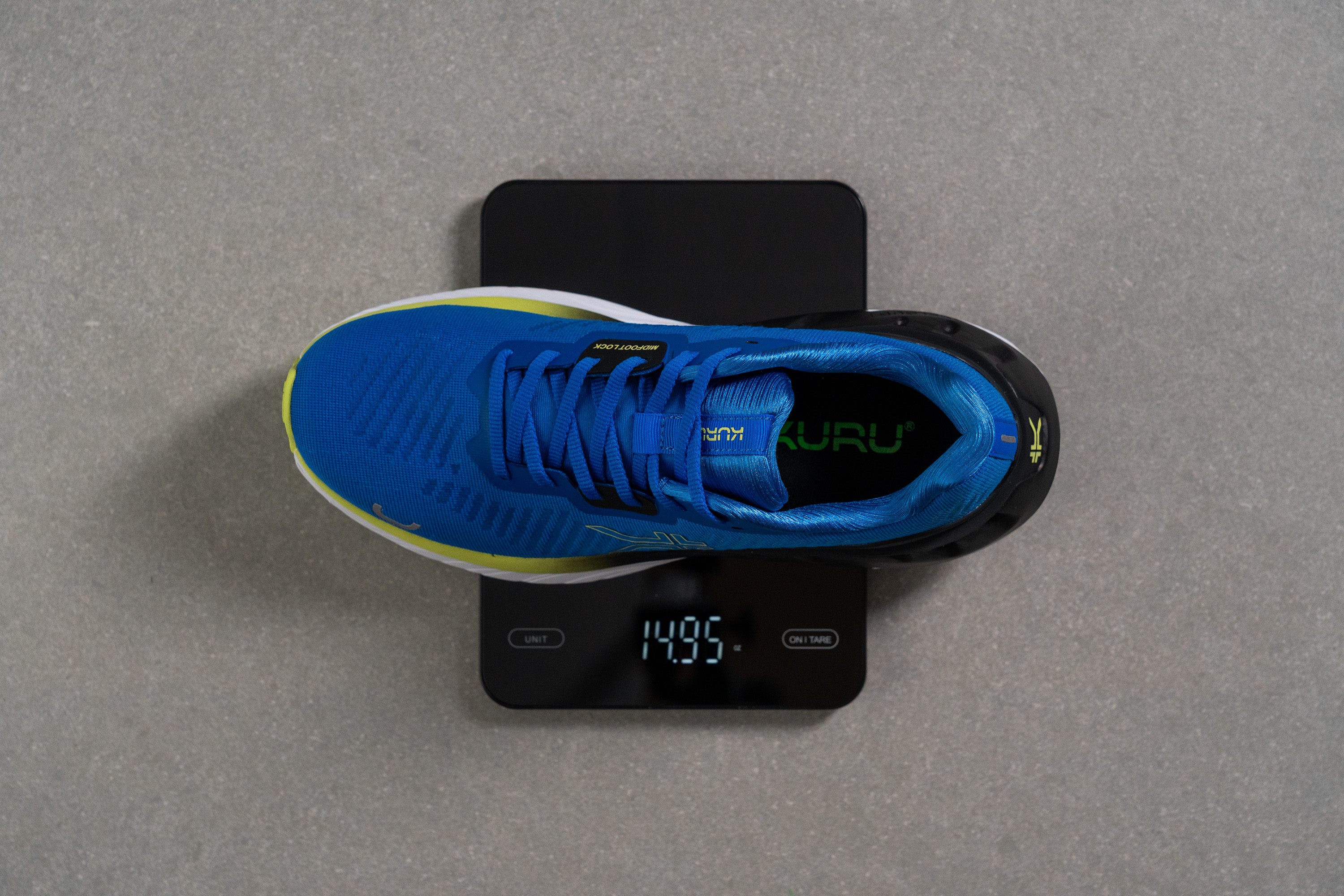
| Triple Max Ion | 15.0 oz (424g) |
| Media | 9.3 oz (264g) |
Transpirabilidad
The upper of the KURU Triple Max Ion looked thick and dense, so we wondered about its ventilation. To check it, we ran our visually-fun smoke test and the shoe reached a strong 4 out of 5 for airflow.
That result reassured us. For a versatile daily trainer, a 4/5 means comfort that adapts well to different climates. We think it’s the type of setup that feels warm enough for cold days yet breathable during hotter months.
When we moved the upper across our light source, the reason for the score became clear. KURU placed numerous ventilation holes across the toebox, with additional perforations extending into the midfoot area, giving the design a functional yet clean look.
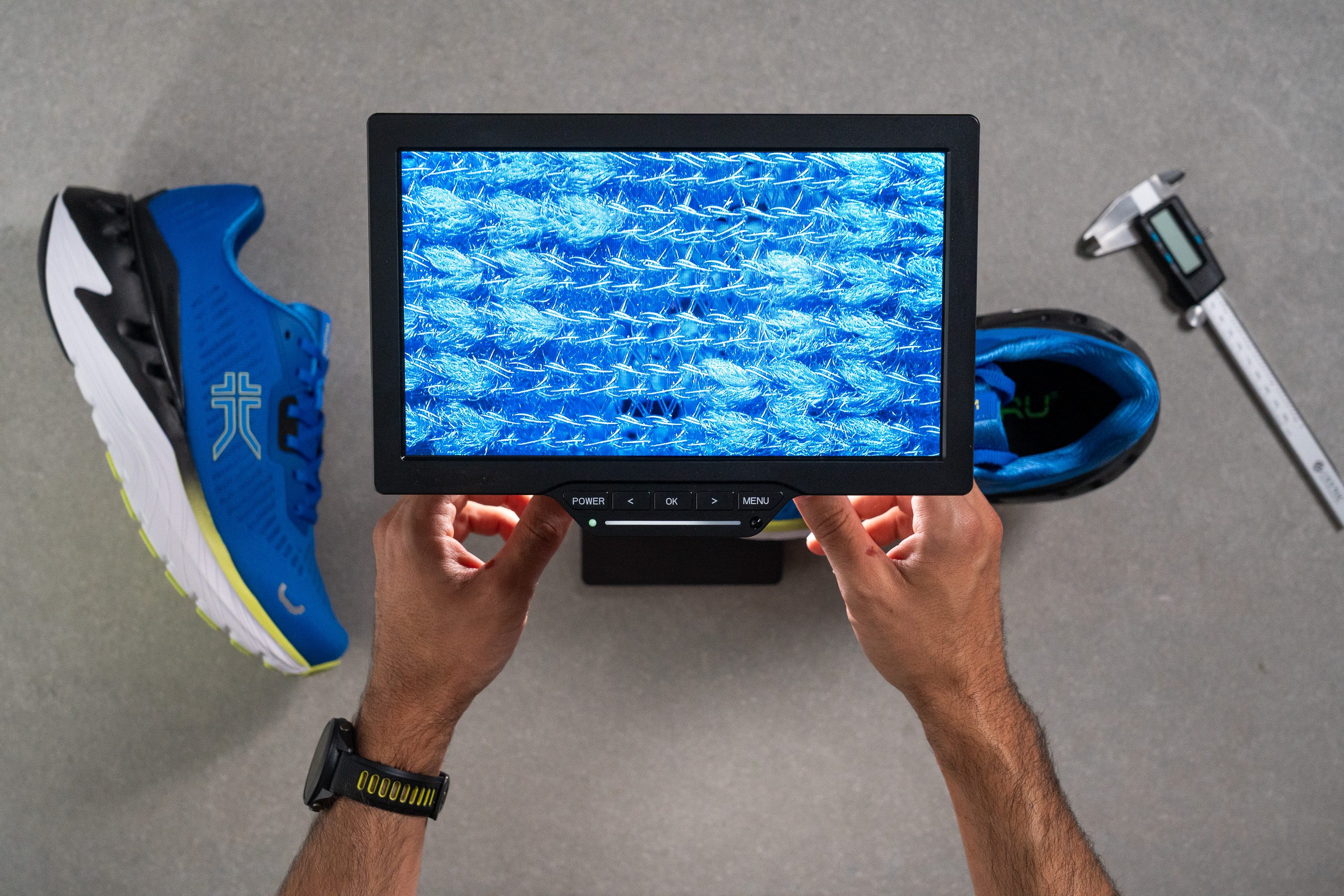
Under the microscope, the material quality impressed us.
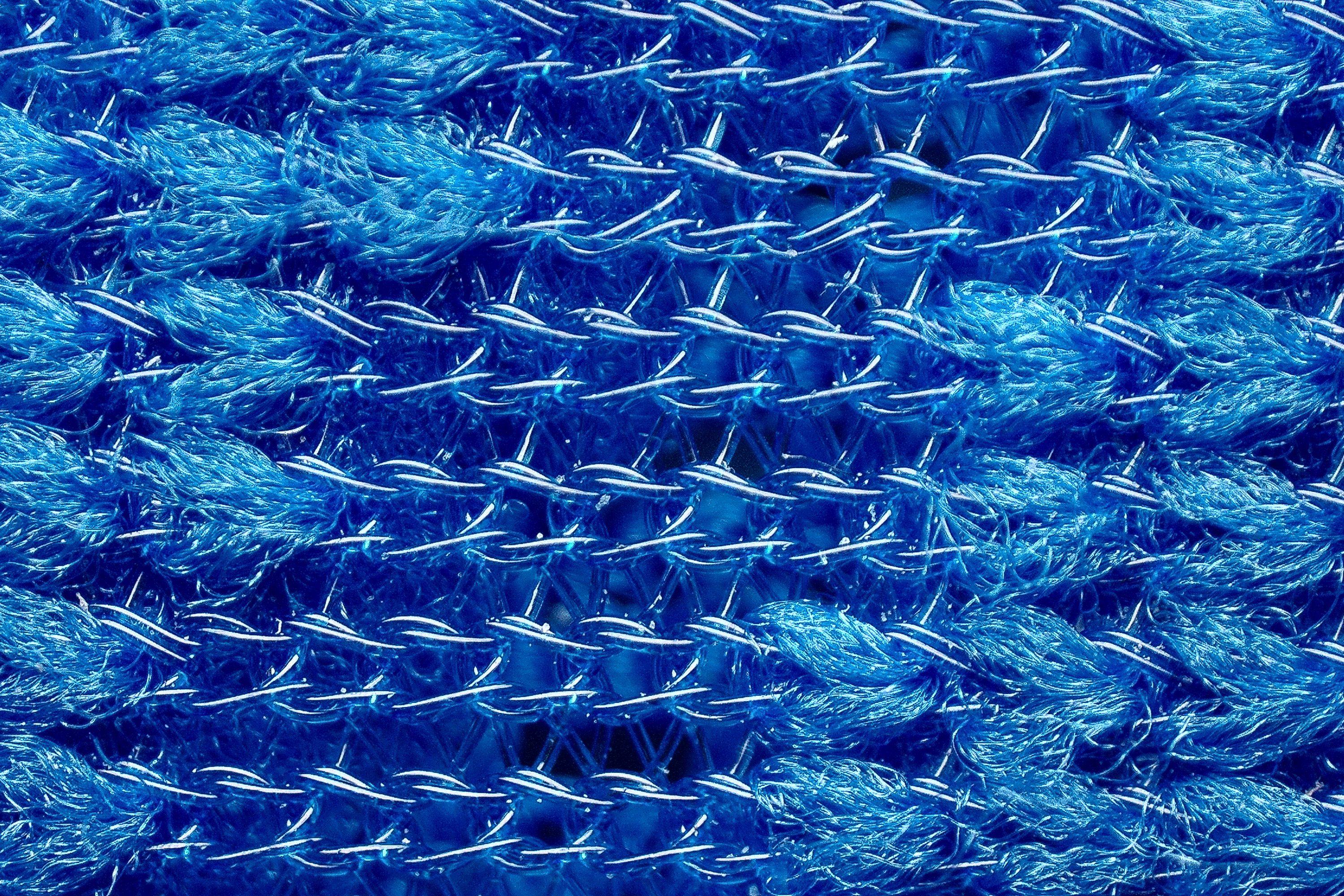
It’s not one of those cut-cost uppers we sometimes see in moderately expensive shoes. Instead, it feels durable, carefully constructed, and aligned with the shoe’s MSRP.
Finally, it's clear to us that for KURU, comfort is king. Even though the upper is heavier than many others we’ve tested, it compensates with plush, well-placed padding. Around the instep and heel, it delivers a cozy fit like few other shoes.
| Triple Max Ion | 4 |
| Media | 3.7 |
Estabilidad
Prueba de estabilidad lateral
We discovered that KURU aimed for stability with this model, as the foot sits almost like in a bucket seat from a race car.
This is clear from the black plastic piece wrapping the heel, providing a lot of support across the rearfoot, while the very broad midsole enhances stability even for those with moderate pronation issues.
Rigidez torsional
The Triple Max Ion is also triple rigid, as it’s as far as a carbon-plated shoe from being flexible from a torsional standpoint.
Its towering heel stack plays a huge role in this, and we found that it earned the highest possible score, a 5 out of 5, in our manual test.
| Triple Max Ion | 5 |
| Media | 3.5 |
Rigidez del contrafuerte del talón
The heel counter also scored a 5/5.
KURU markets this shoe heavily for plantar fasciitis and other foot pain issues, and while we stay cautious with such claims from whatever brand makes them, we found its rigid, stable heel can truly support those who need it.
| Triple Max Ion | 5 |
| Media | 2.9 |
Anchura de la mediasuela - antepié
We already noted the wide midsole, but this time we grabbed our precise calipers to get exact numbers. In the forefoot, we measured 121.4 mm—an extremely broad platform that’s closer to what you’d expect in a stability shoe.
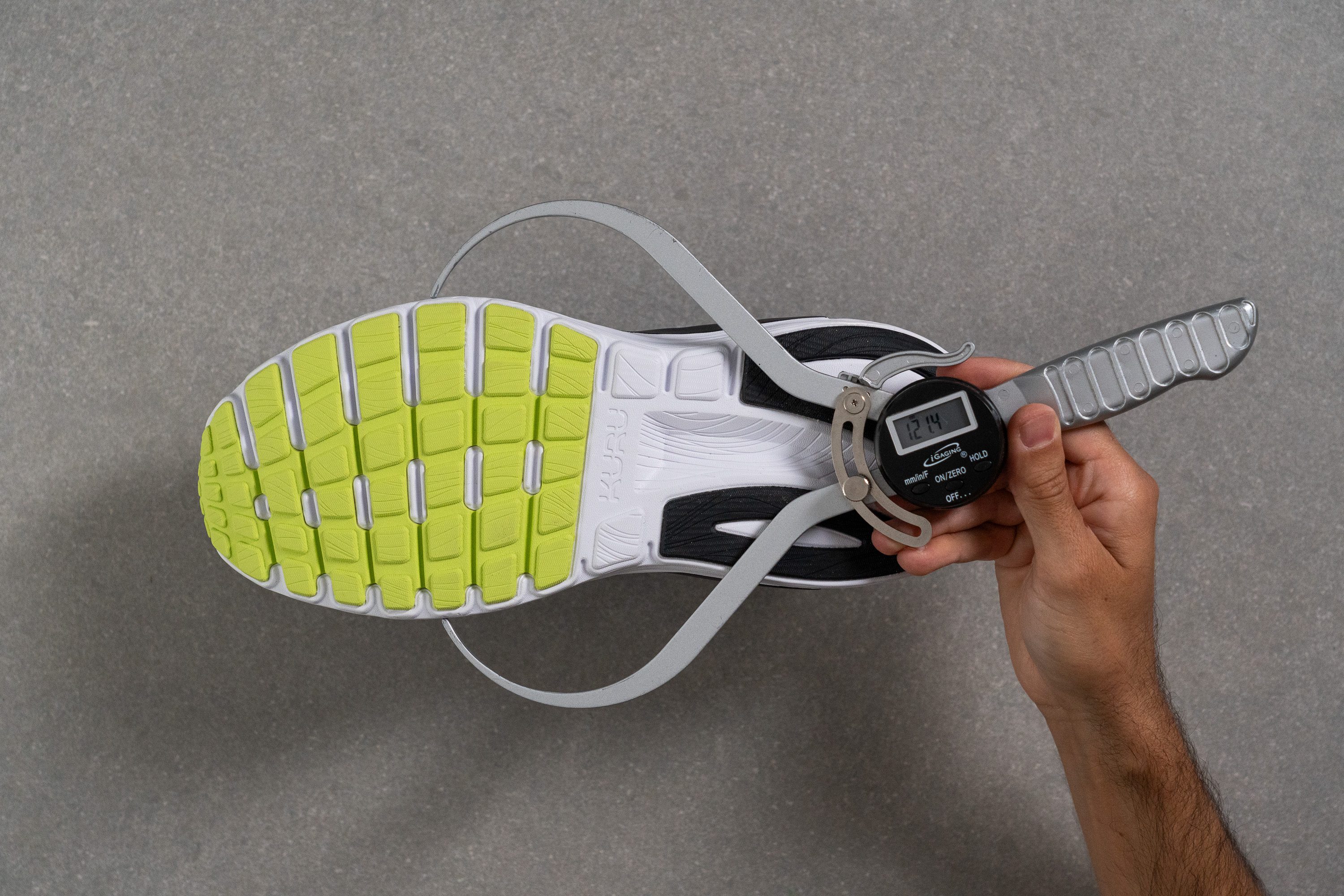
| Triple Max Ion | 121.4 mm |
| Media | 114.4 mm |
Anchura de la mediasuela - talón
But here’s the thing... the heel is ultra wide! We measured 102.6 mm, placing it among the widest shoes we’ve ever tested in the lab. And of course, it feels far from agile, yet extreme heel strikers will appreciate the secure platform.
This impressive width, paired with KURUSOLE technology wrapping the heel, makes the rearfoot one of the most stable we’ve measured in the lab.
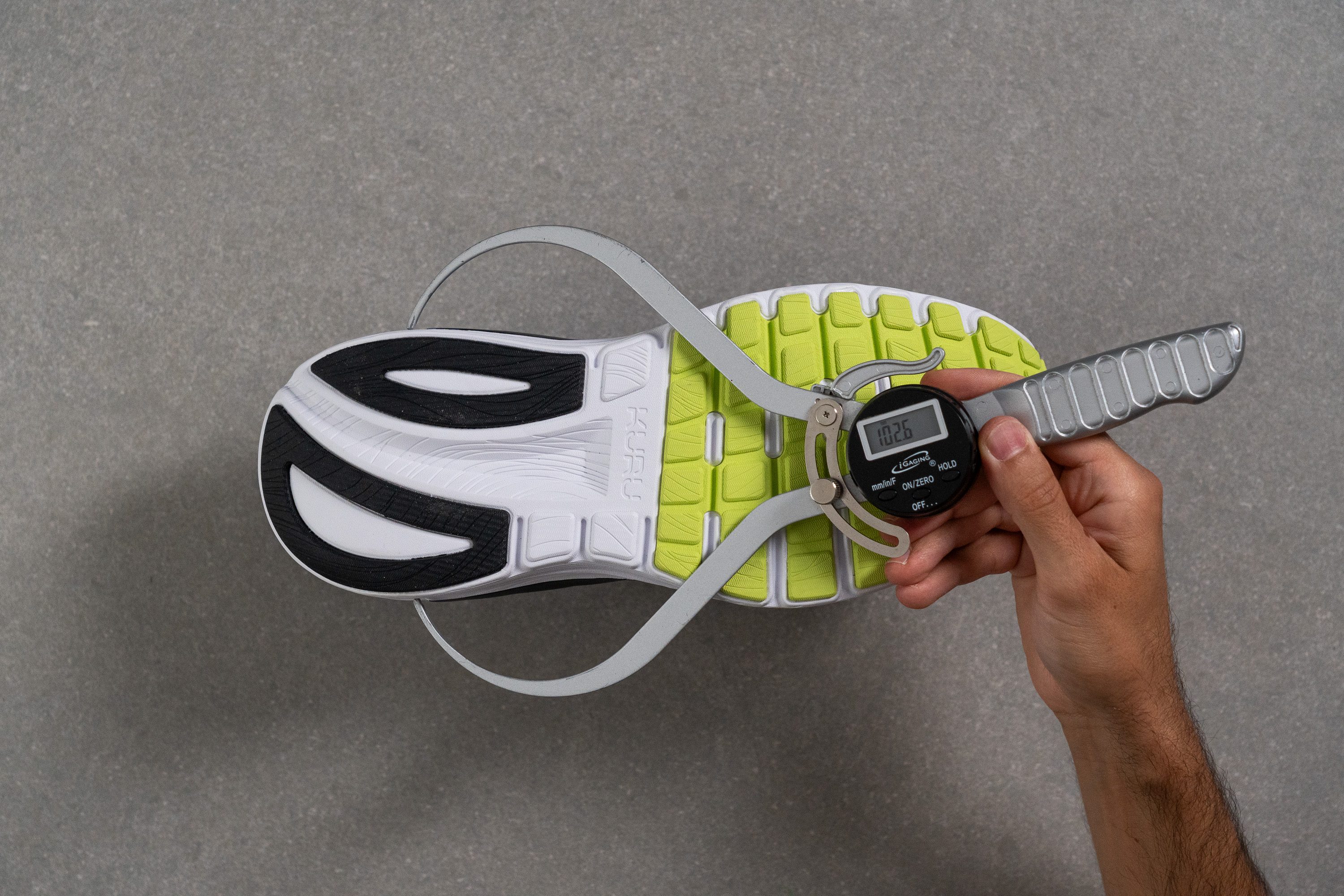
| Triple Max Ion | 102.6 mm |
| Media | 90.7 mm |
Durabilidad
Durabilidad de la parte delantera
During our breathability check, we noticed the toebox looked durable, but we held back final judgment until running our Dremel test. The outcome confirmed it with a solid 3/5 score, showing the material offers reliable resistance to abrasion.
| Triple Max Ion | 3 |
| Media | 2.6 |
Durabilidad del acolchado del talón
We also discovered that the heel collar is robust and durable, earning a solid 4 out of 5 in our evaluation. It holds up well against wear, giving peace of mind to everyone as this is not a cheap shoe at all.
| Triple Max Ion | 4 |
| Media | 3.4 |
Durabilidad de la suela
When we tested the rubber with our Dremel at twice the speed, the outcome was solid enough to check the box and move forward. With just 0.9 mm of damage, the KURU Triple Max Ion proved reliable in outsole durability.
| Triple Max Ion | 0.9 mm |
| Media | 1.1 mm |
Grosor de la suela
We measured a thick 3.7 mm layer of rubber, and given how heavy this shoe is, KURU could likely trim it down.
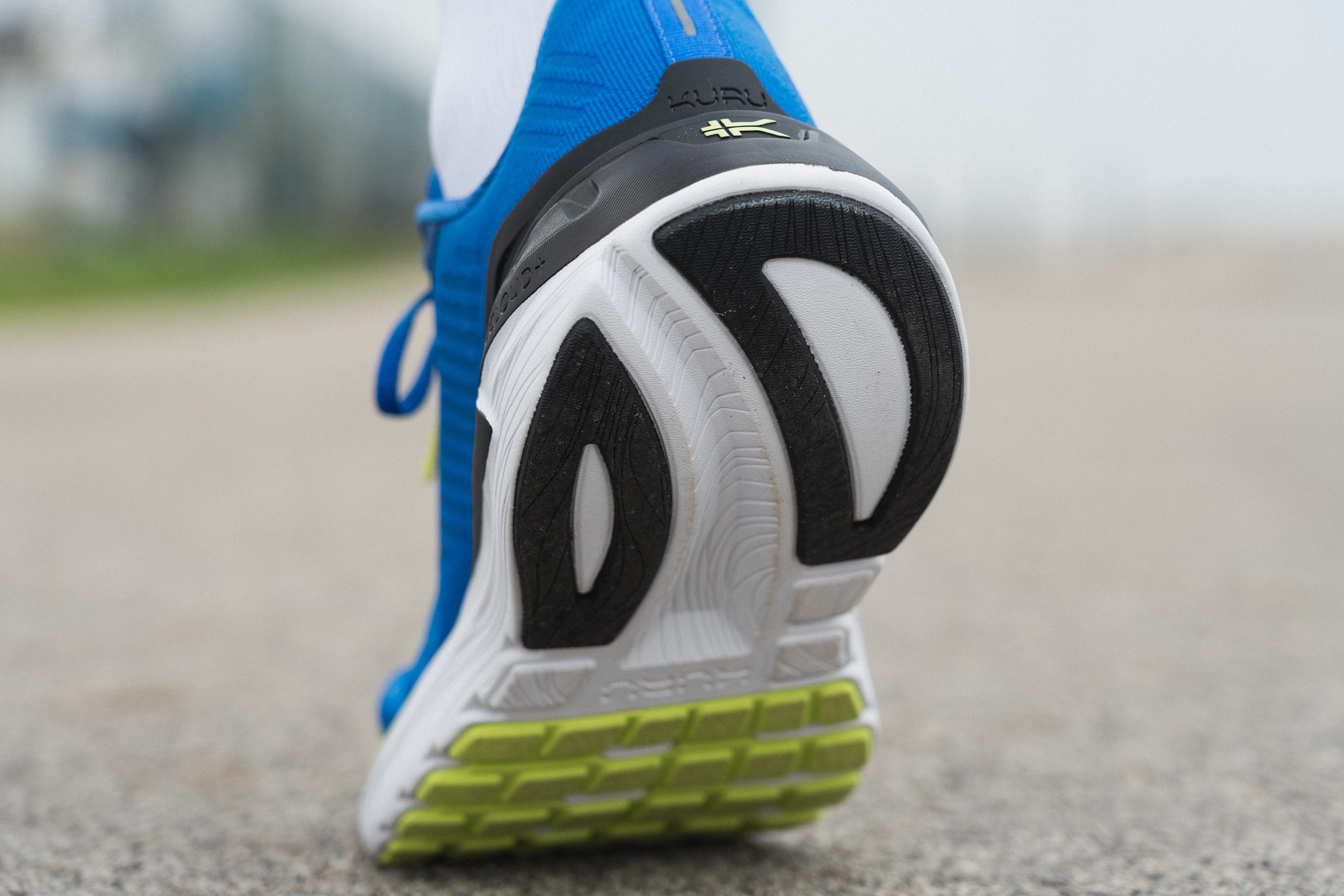
The outsole durability appears solid enough that shaving off about 1 mm would be reasonable.
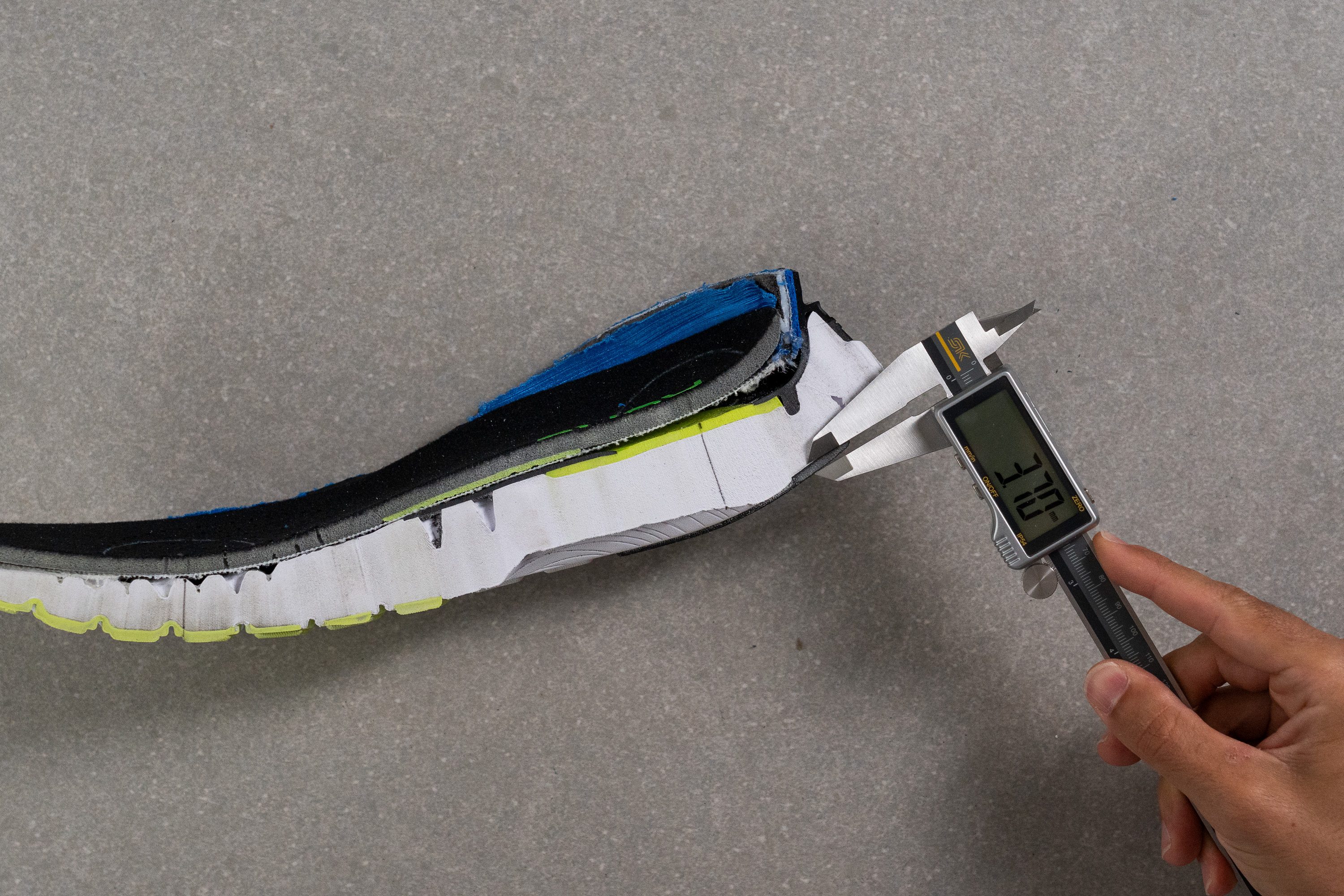
| Triple Max Ion | 3.7 mm |
| Media | 3.2 mm |
Varios
Grosor de la plantilla
It seems KURU’s marketing team has a soft spot for uppercase, branding the insole as the ULTIMATE INSOLE. The name feels a bit over the top, but thickness-wise it definitely stands out, measuring 6.4 mm.
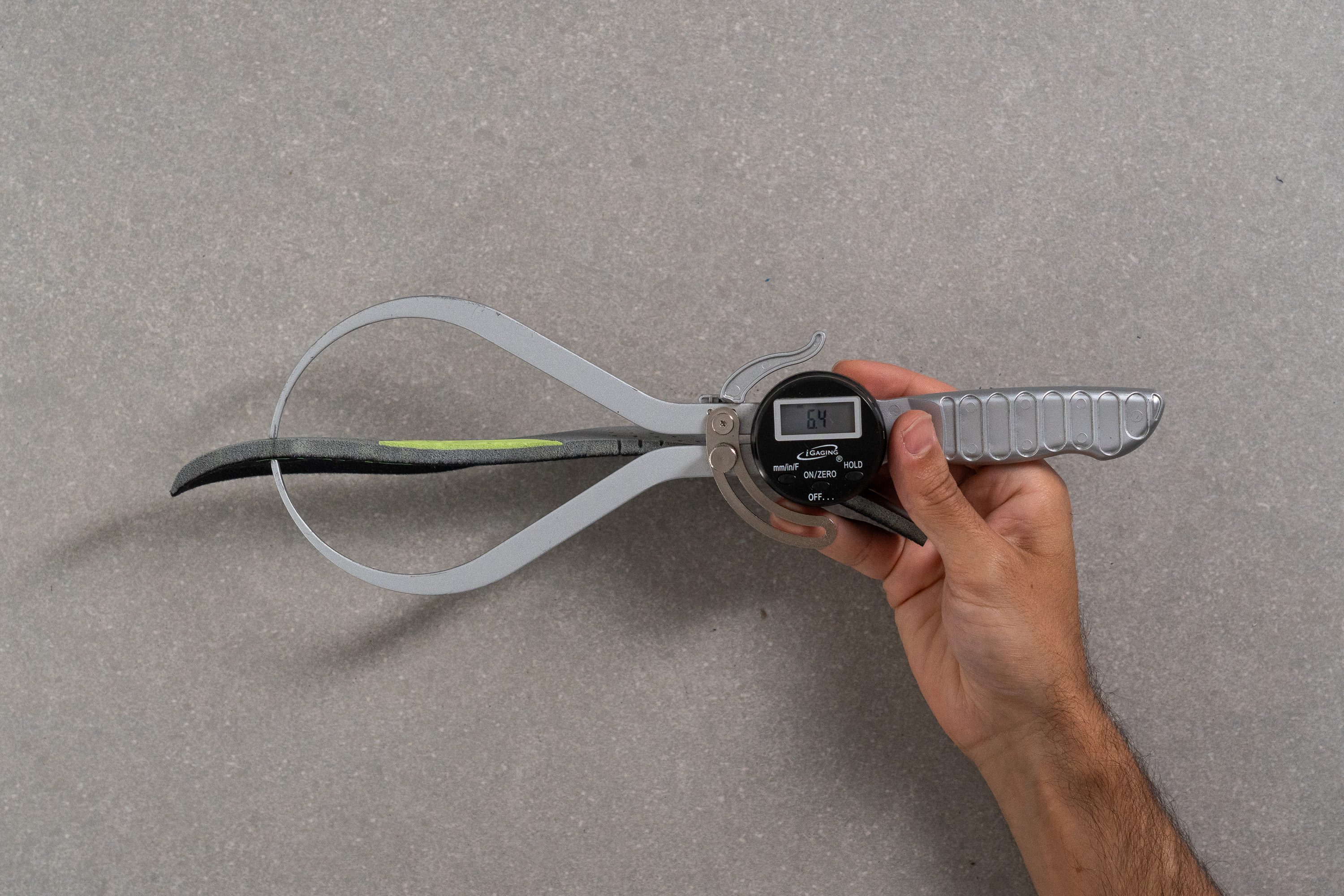
| Triple Max Ion | 6.4 mm |
| Media | 4.5 mm |
Plantilla extraíble
The insole is removable, allowing you to swap it for a standard option if you prefer. You’ll lose the built-in arch support from this one, but it’s easy to replace with an alternative you might already have at home.
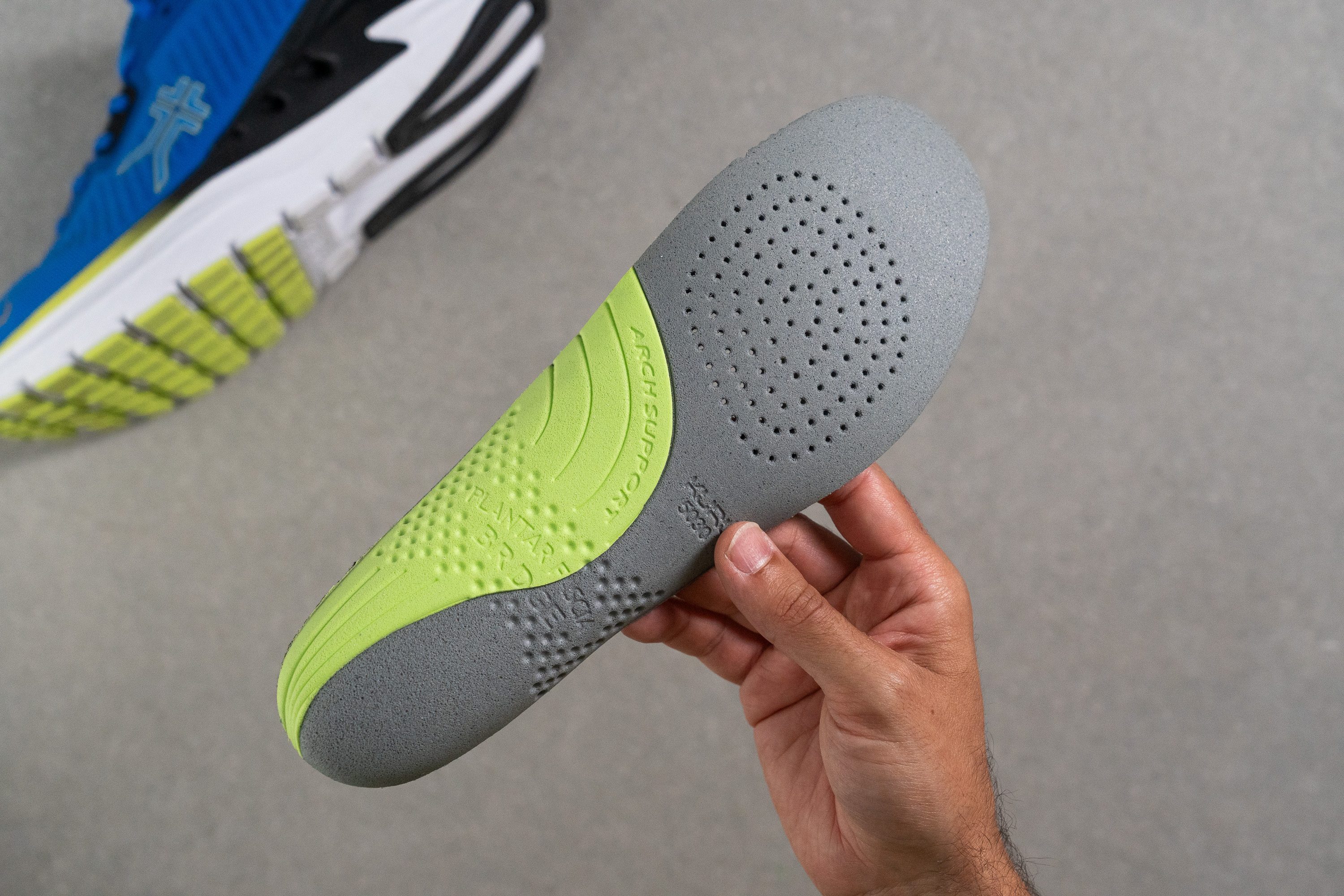
| Triple Max Ion | Sí |
Rigidez de la mediasuela en frío (%)
The KURUCLOUD+ foam became 24% firmer after we left it in the freezer for 20 minutes, which we consider a solid outcome and better than what we often see in similar EVA-based midsoles.
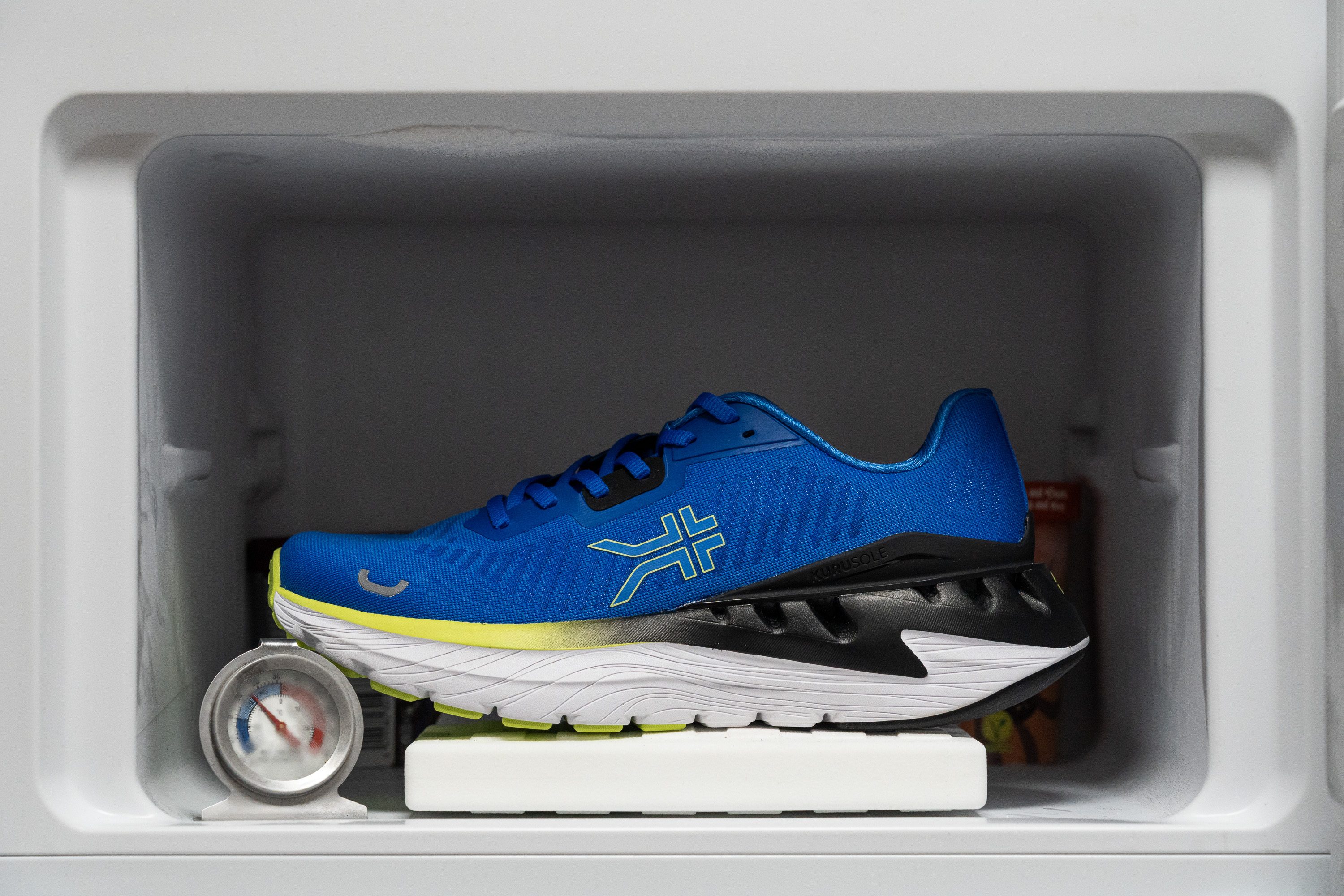
| Triple Max Ion | 24% |
| Media | 24% |
Elementos reflectantes
Nicely done by KURU for adding two reflective elements per shoe, providing optimal visibility from both the front and the back.
| Triple Max Ion | Sí |
Acolchado de la lengüeta
The lacing system of the KURU Triple Max Ion uses reinforced eyelets and an added overlay to secure the midfoot. It's also interesting to see yet another feature with uppercase letters, this time named "MIDFOOT LOCK".
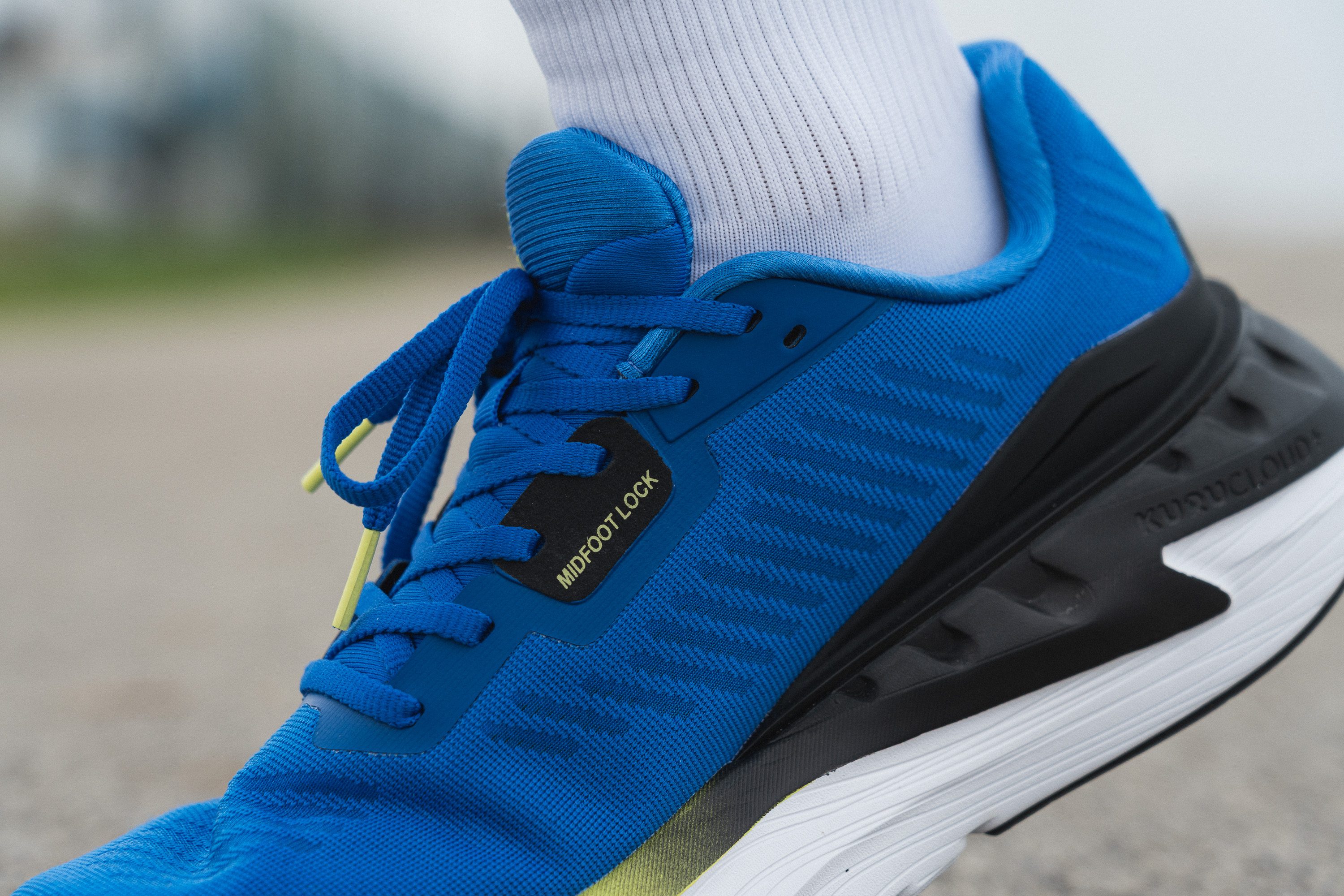
The tongue is another place where KURU simply forgot about the shoe weight and went full into comfort. We found a tongue thickness of 12.4 mm that spans throughout the whole tongue, making it ideal for all-day use.
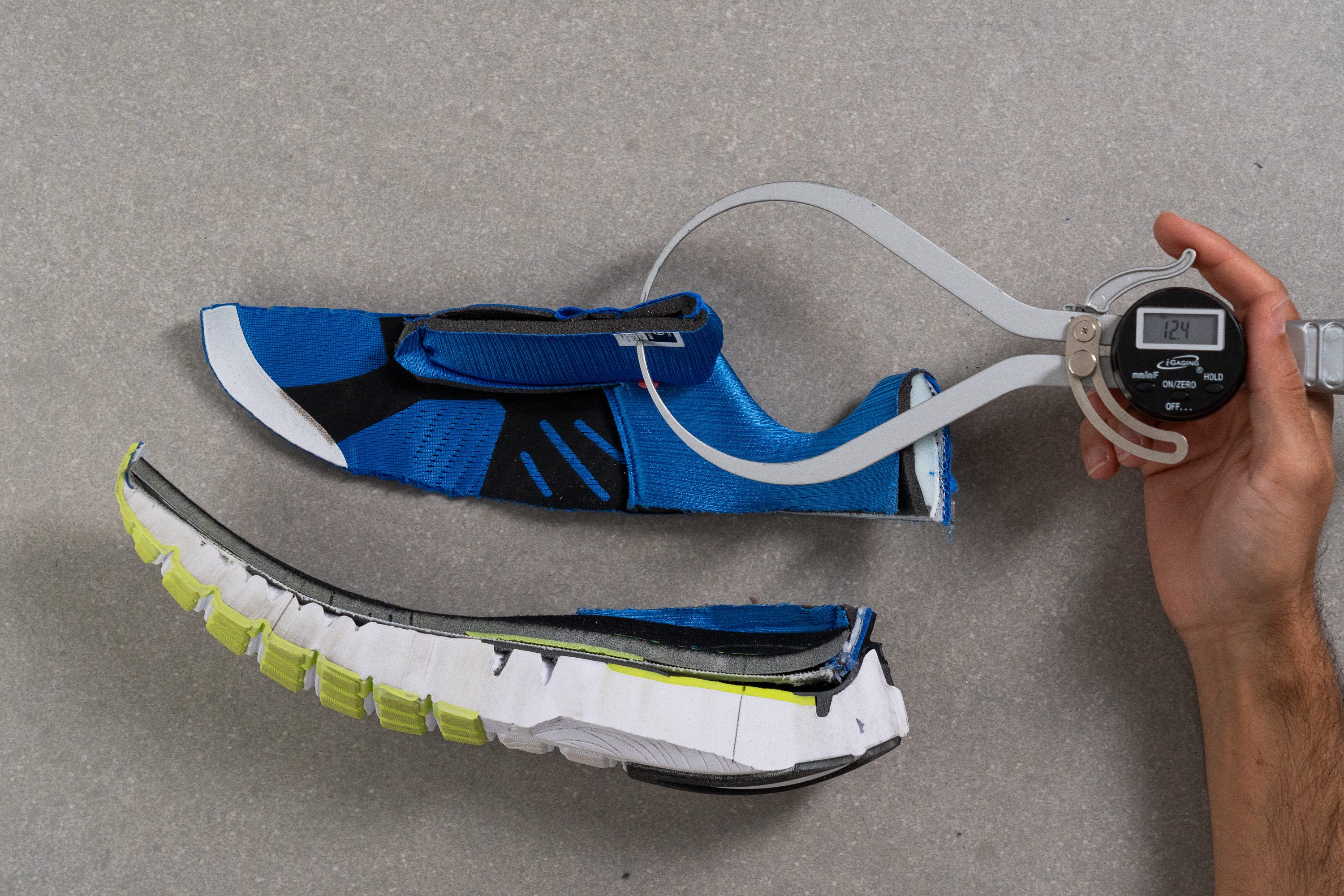
| Triple Max Ion | 12.4 mm |
| Media | 5.8 mm |
Lengüeta: tipo de refuerzo
It’s disappointing to see a non-gusseted tongue in a shoe with such a high price tag. The high thickness and added loop help reduce shifting, but we still expected a gusseted design here.
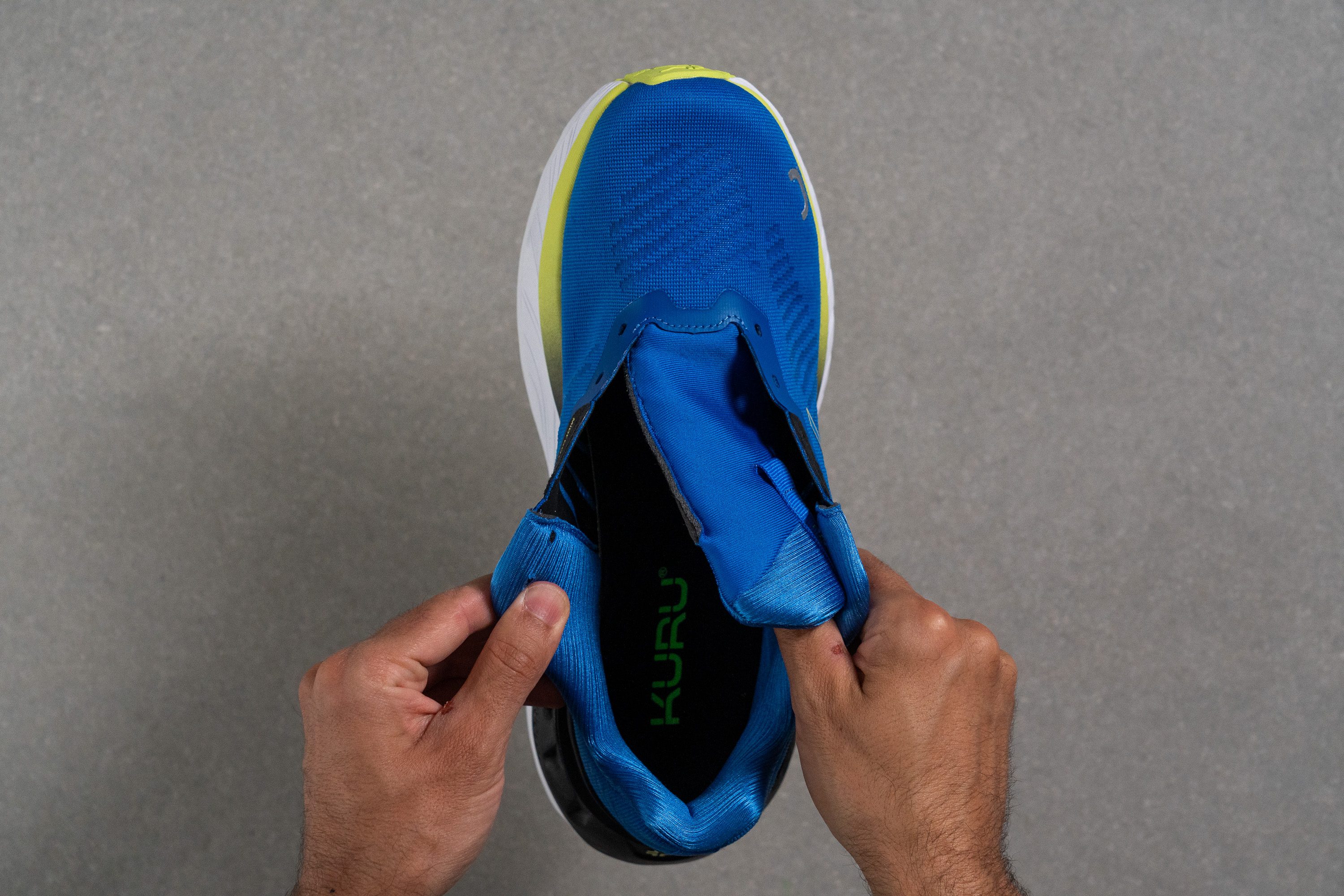
| Triple Max Ion | Ninguno |
Precio
The price of this shoe feels like a mixed bag depending on your needs. For most runners, it will be expensive given its weak results in shock absorption, weight, and energy return. Yet casual runners seeking comfort and a high drop may be a perfect match.
| Triple Max Ion | $185 |
Tirador del talón
The Triple Max Ion skips a heel tab, but we appreciated the clean design of this part of the shoe. In fact, KURU neatly hid the upper’s stitching under an external overlay, giving the rearfoot a more polished look.
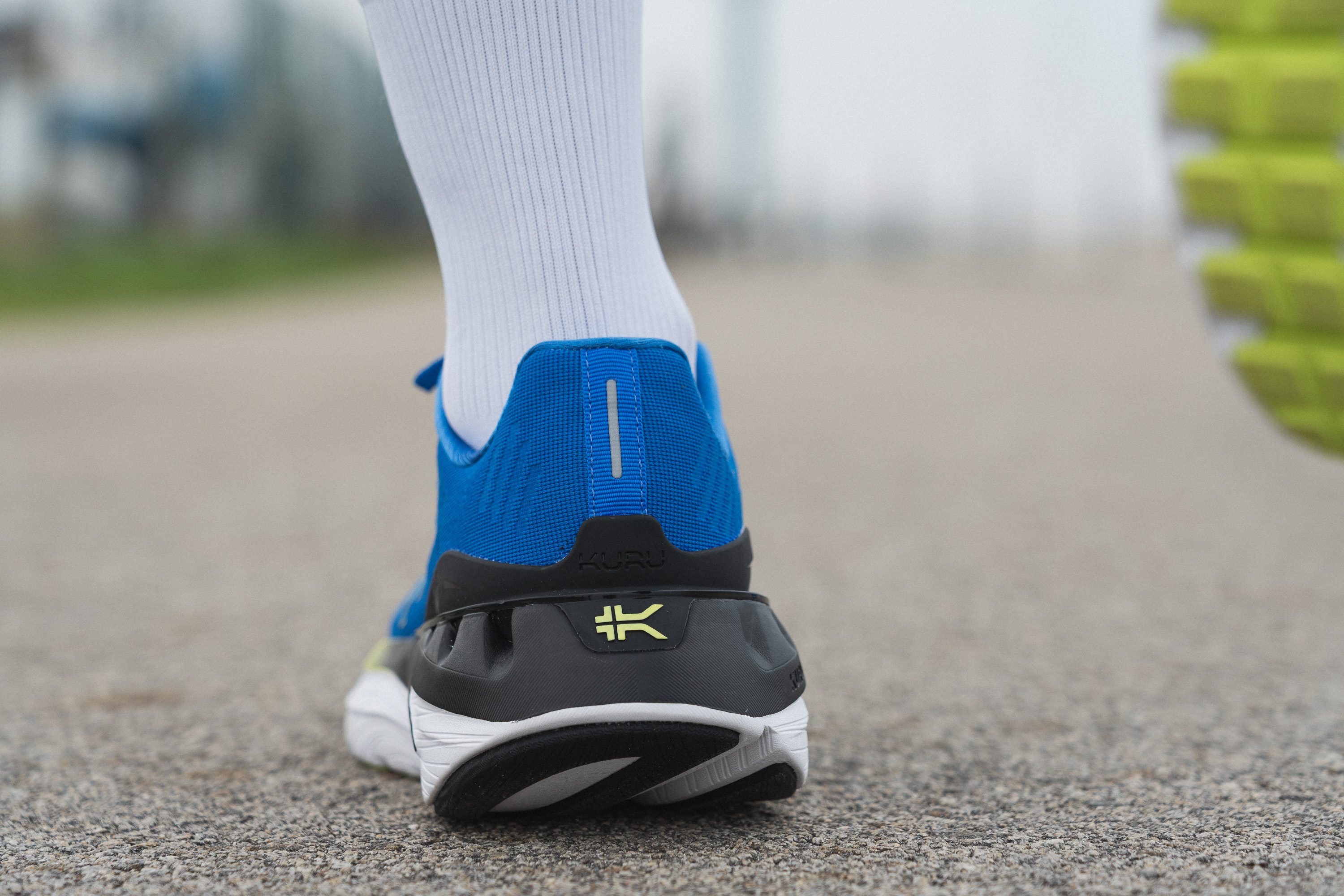
| Triple Max Ion | Ninguno |

